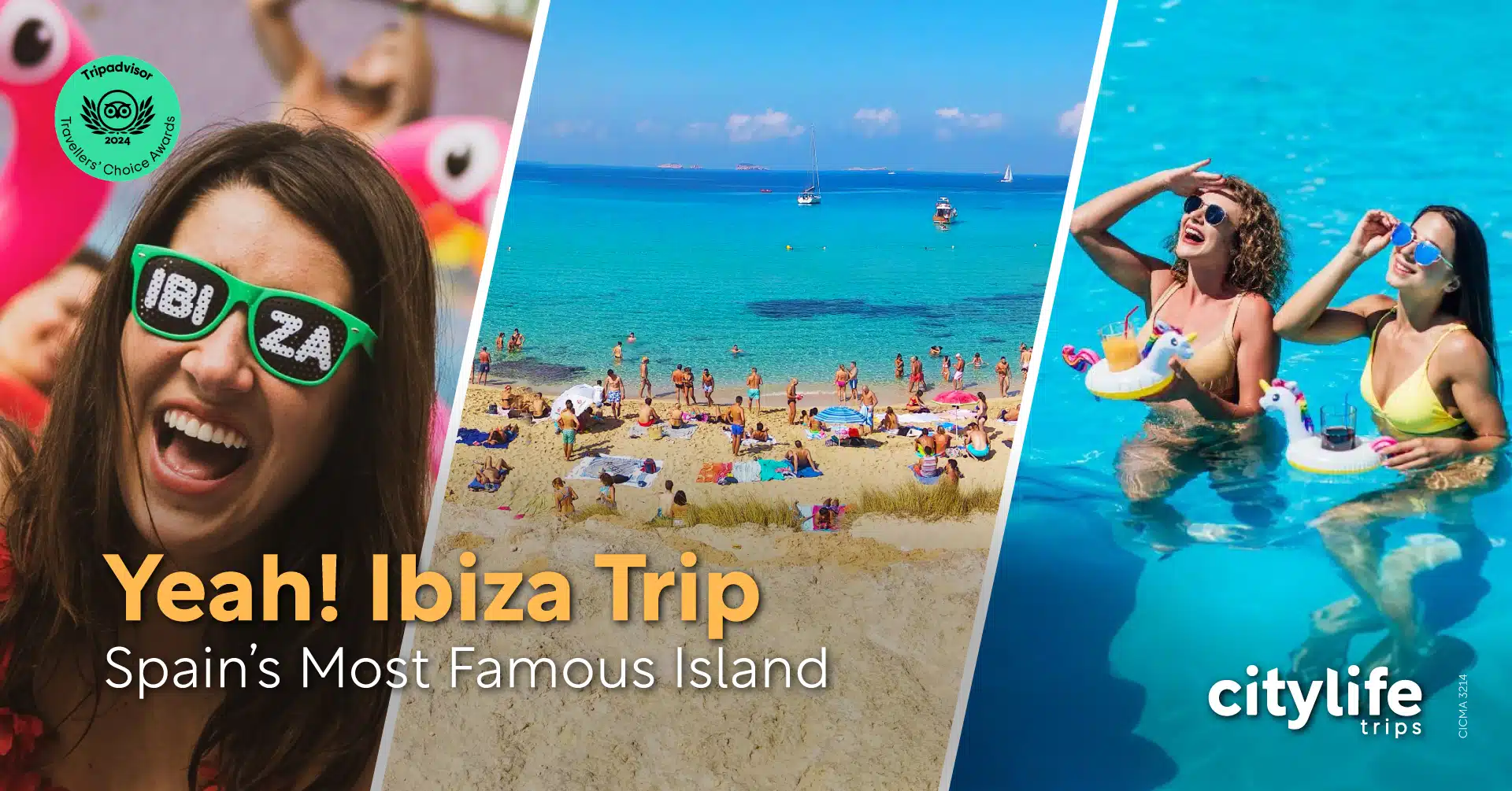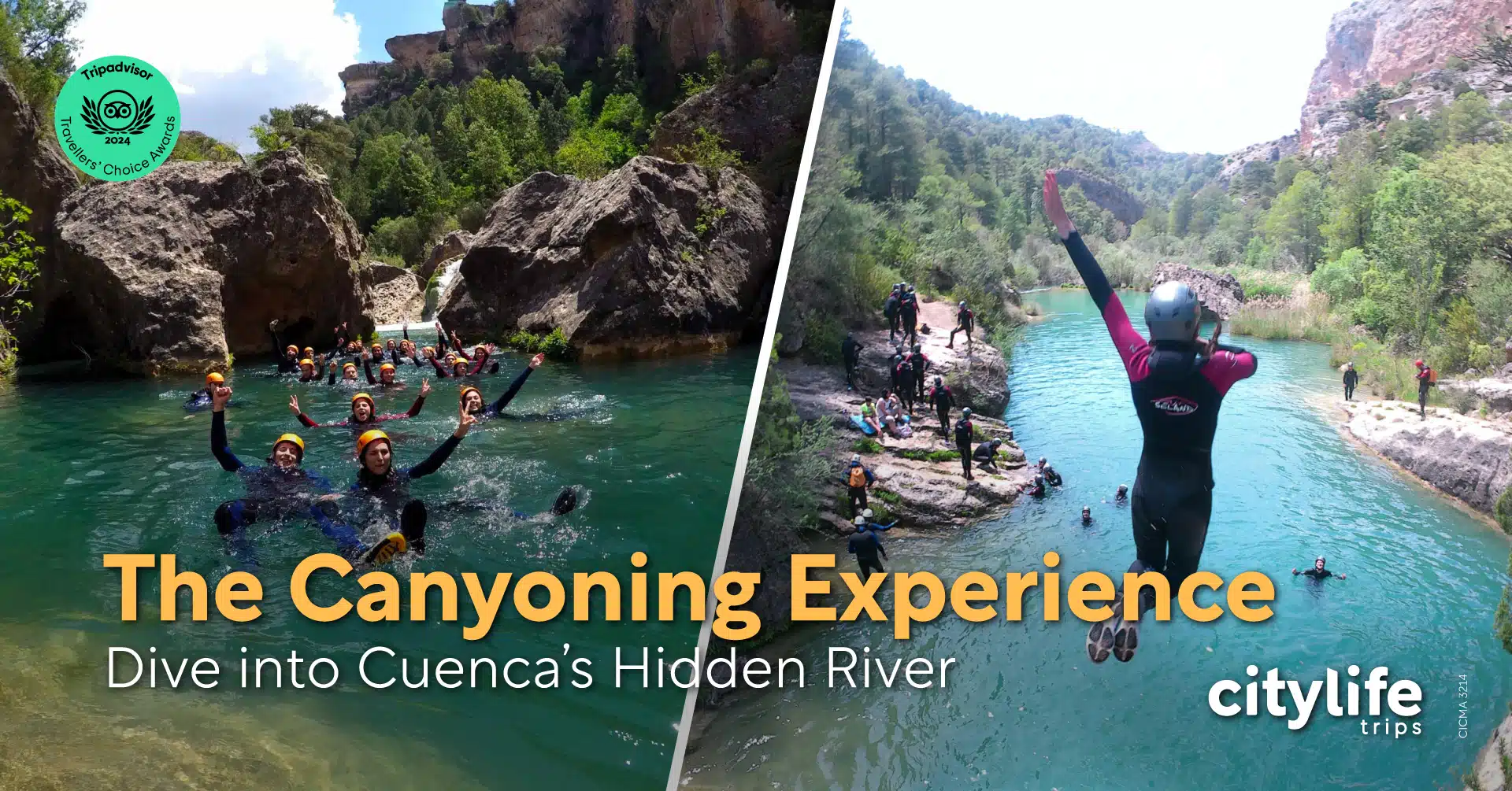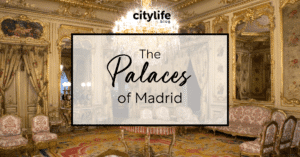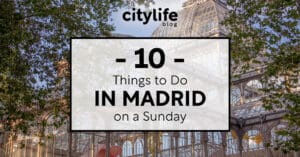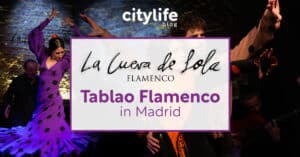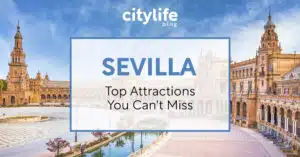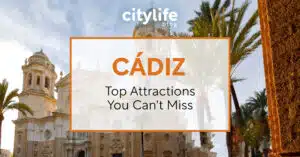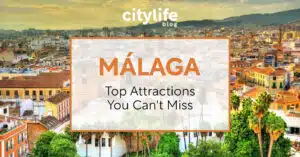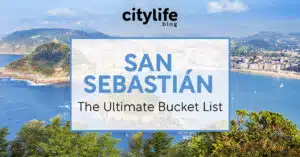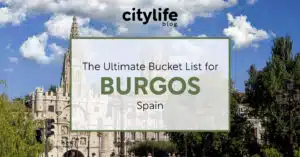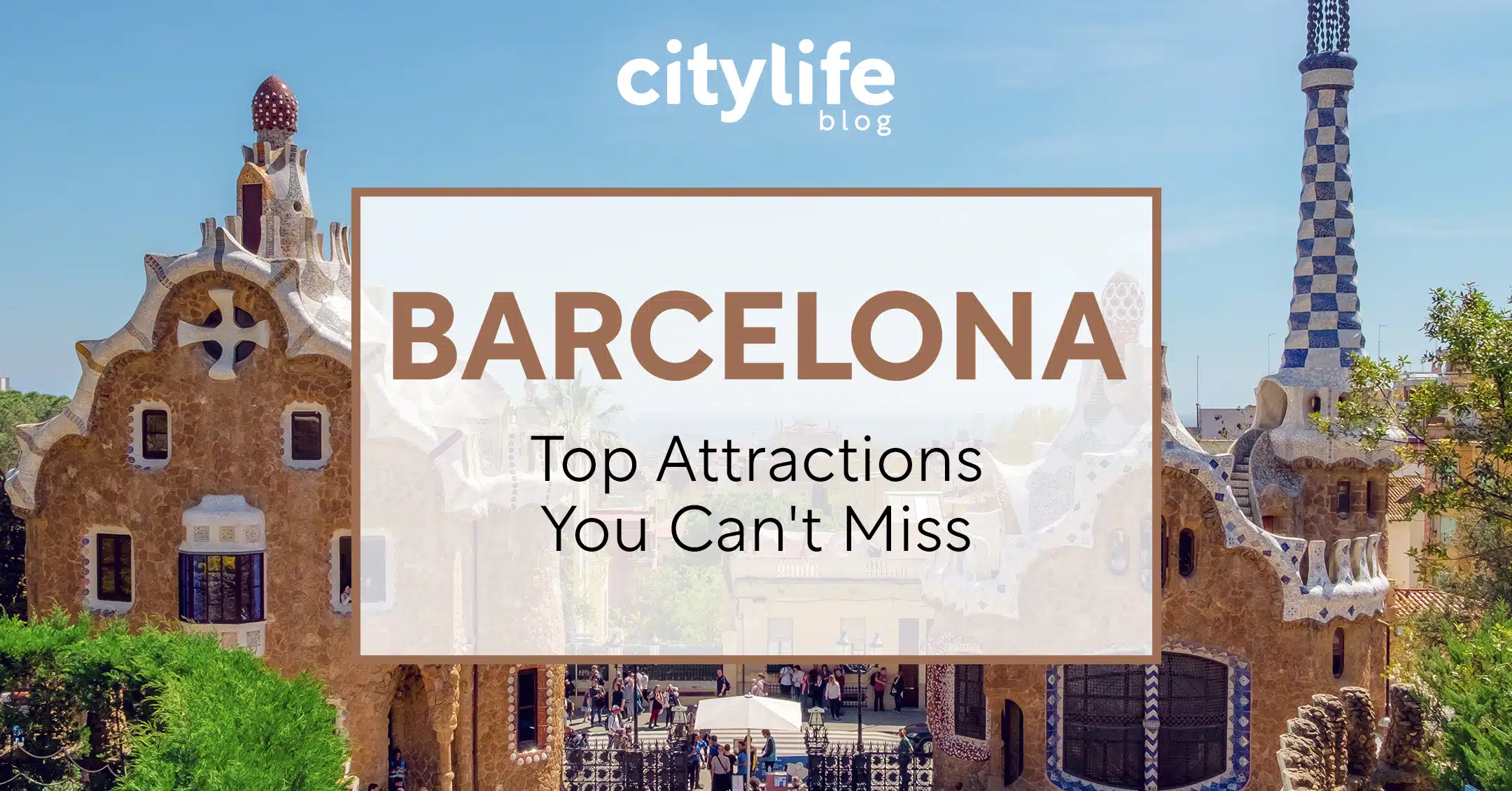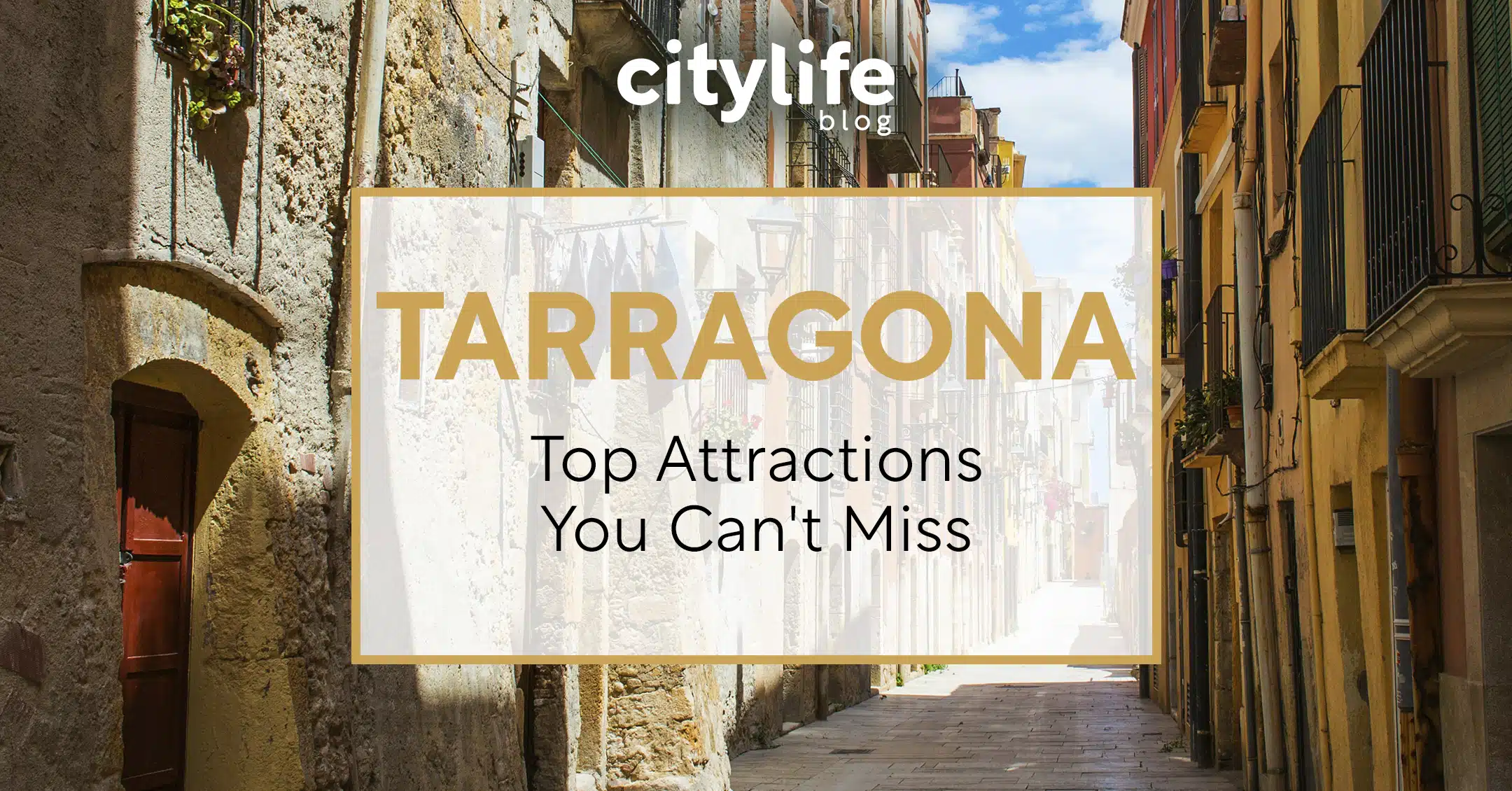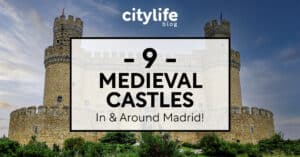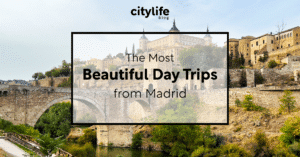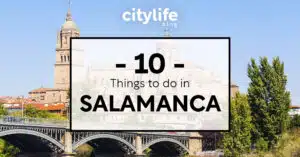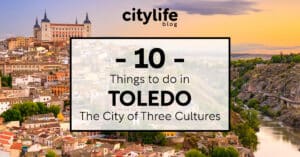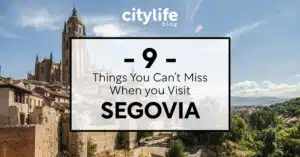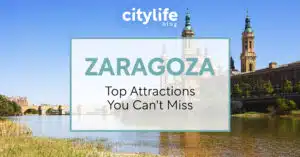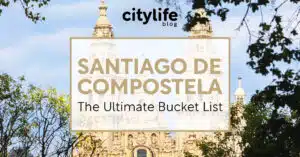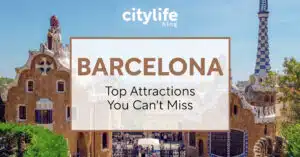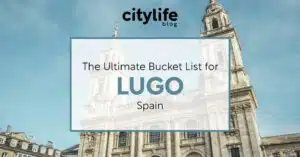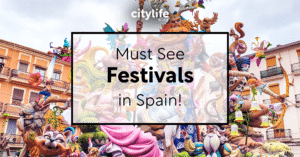
In this comprehensive travel guide, we will share everything you need to know so you can visit Spain like a professional traveller. Explore the rich and diverse history of the country, discover the top travel destinations and dive into its incredible culture, whether you’re looking for a relaxing holiday on the coast or a trip filled with thrills, excitement and adventure – we’ll make sure you’re prepared for it all!
Want to explore the best that Spain has to offer with a group of like minded internationals? Don’t forget to check the calendar of our upcoming trip packages that range from quick and easy day trips from Madrid, to 3 day weekend adventures.
Keep reading to soak up everything we have to share with you about our favourite country or skip ahead to the topic you’re most interested in by using our detailed Content Overview.
1. Travel Through Spain – Citylife’s Spain Tours
Whether you want to go north or south, to the coast or into the mountains, we promise that Citylife Madrid has a trip package for you! Spain is our home and we love to share its dynamic culture, delicious cuisine and breathtaking landscapes with everyone who visits. You can enjoy quick day trips to charming small towns just outside of Madrid, or longer weekend adventures to the many regions beyond. Take a look at all of our upcoming Spain tours so you can explore with other young internationals!
2. Spain City Guides – Best Places to Visit in Spain
Spain is arguably one of the most diverse countries in Europe, with every region offering its visitors a new aspect of incredible landscapes, history, and culture. Below we’ve pulled together our vast collection of articles covering the top things to do in our favourite cities all across Spain. In hopes that our insights and recommendations will inspire anyone planning a visit to this beautiful country!
2.1 All About Madrid – Spain’s Extraordinary Capital
Madrid, the capital of Spain, is a cultural epicenter that we love to call home. In addition to being the country’s largest metropolis, politcal and financial capital, Madrid is also the historic headquarters of the Spanish Royal family and the Parliament (Corte Generales).
The city’s importance to Spain as a nation, also makes it an incredibly interesting place to visit. From its majestic royal palaces, world-renowned museums, bustling tapas bars and non-stop nightlife. Madrid offers an endless supply of attractions that cater to every type of traveler.
Check out our diverse catalogue of articles about all the amazing things to do and see in our favourite city in the world as well as our Ultimate Madrid Bucket List! Whether you’re stopping by for a short visit or planning to stay for a few months to work, study or just live life – we promise we have something in there for you!
Additionally, make sure you don’t miss the many social and cultural activities that we host throughout the year!
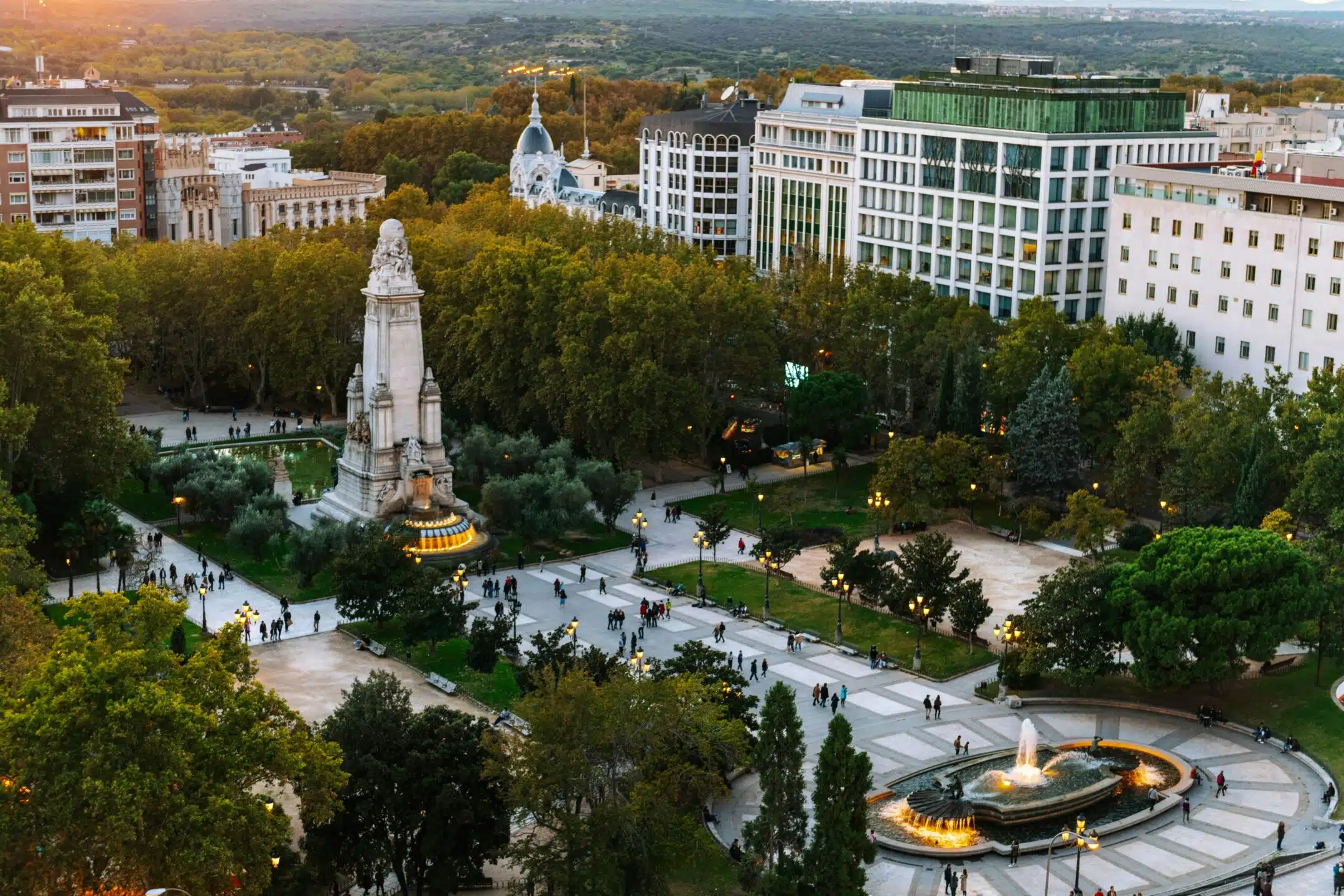
Live Music in Madrid
The Palaces of Madrid!
Paseo del Arte – Home to the Best Museums in Madrid
Zoo Aquarium in Madrid – Hours, tickets and location
7 Ways to Spend Valentine’s Day in Madrid
8 of the Best Flamenco Shows in Madrid
Meet & Dance: Salsa & Bachata Night!
Citylife’s Ultimate Madrid Bucket List & Discounts!
Vintage Shopping in Madrid – 11 Shops to Check Out
Shopping in Madrid – The Ultimate Guide!
The 14 Best Markets in Madrid
10 Things to do in Madrid on a Sunday
14 Reasons Why Moving To Madrid Will Change Your Life Forever!
7 of the Best Theme Parks in Madrid – Save up to 40%
La Cueva de Lola – Tablao Flamenco in Madrid
Get in Shape in Madrid with the Citylife Sports Club
2.2 Exploring Andalucía – Spain’s Fiery South
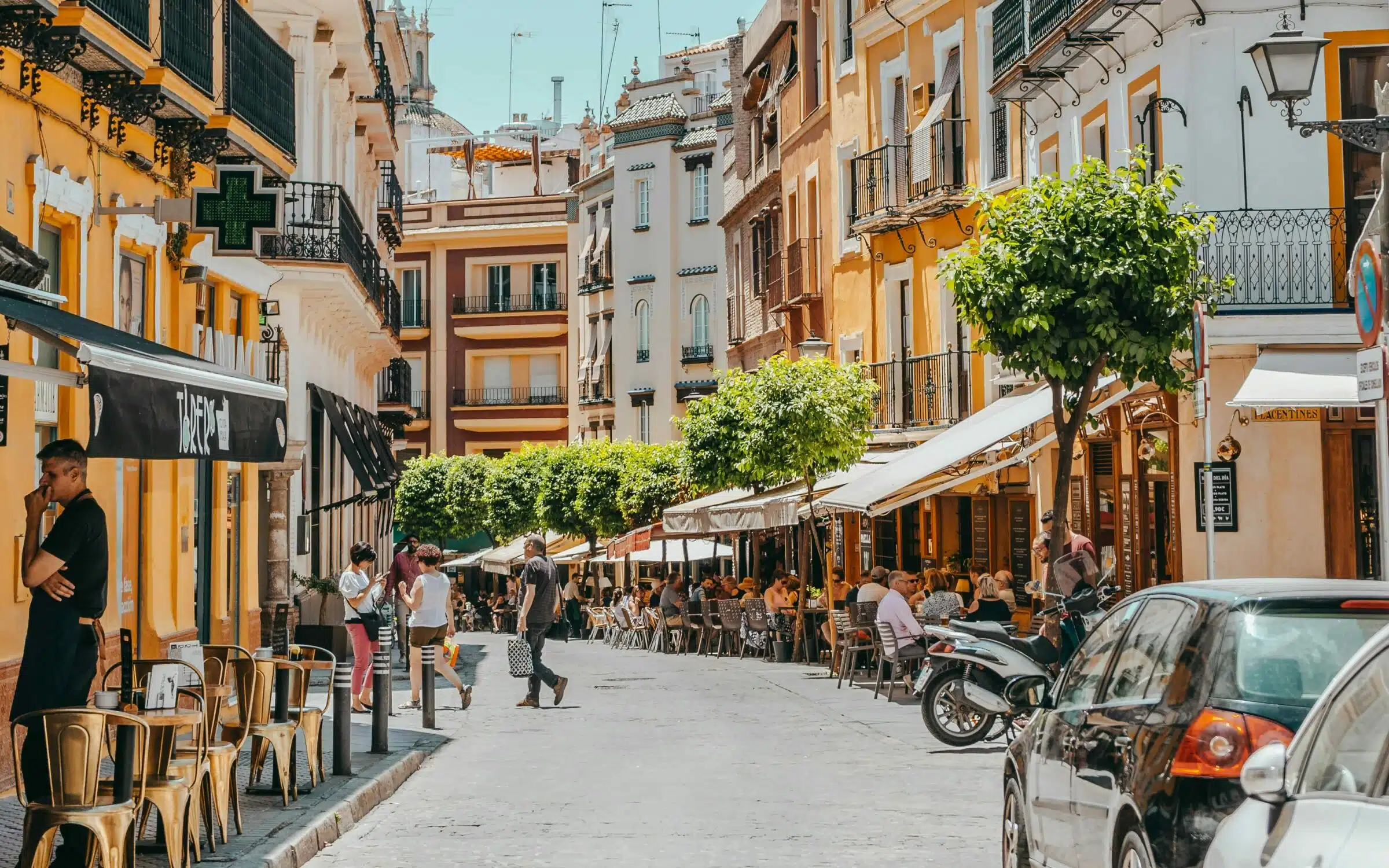
Andalucía, formally known as the Kingdom of Al-Andalus, is the Southern region of Spain where Europe and Africa come together. Home to famous sites like the incomparable Alhambra Palace in Granada, Sevilla’s historic bell tower, and Cordoba’s breathtaking mosque/cathedral hybrid. Making it a mandatory stop for anyone planning a trip to Spain.
But Andalucía is more than just its iconic cities. Its rugged mountains, whitewashed villages, golden beaches and endless olive groves make the region feel like something from a postcard. All this, and we haven’t even mentioned its incredible food scene – seemingly endless tapas with huge portions for incredible prices. And of course, we can’t forget about Flamenco, which was born in the heart of the region and can be enjoyed around every corner.
Keep reading below to find out some of our favourite things to do in Spain’s southern region of Andalucía. In these guides, we will cover the top cities of the region and what you simply can’t miss while visiting!
Explore the south of Spain with us on our weekend packages to Granada, Sevilla and Córdoba!
13 Top Attractions in Sevilla you Can’t Miss
13 Top Attractions in Córdoba
11 Top Attractions in Granada You Can’t Miss
Exploring Marbella
Exploring Cádiz
Exploring Málaga
2.3 Exploring The North of Spain – Galicia & The Basque Region
País Vasco, or The Basque Country is a small region in the North of Spain. It’s a region unlike any other you will see in Spain, in more ways than one! Formally known as Vasconia, the Basque Country was sought after by powerful civilizations like the Romans, the Visigoths, the Franks and even the Vikings, because of it’s access to the ocean and its strategic location along the border of Francia (Medieval France). The region today is famous for it’s incredible food, having its own language (Basque) and being home to some of the most breathtaking shorelines in the country
To the east of the Basque Country lines the lush and enchanting region of Galicia. Known as the Ireland of Spain, Galicia’s deep Celtic heritage has imprinted onto the culture and still thrives today in many different ways.With its picturesque fishing villages, rugged coastlines, green countryside, ancient forests, lively music and local festivals.
Keep reading below to dive into the mystical regions of Galicia and The Basque Country. Each guide will tell you exactly what you have to see during your trip!
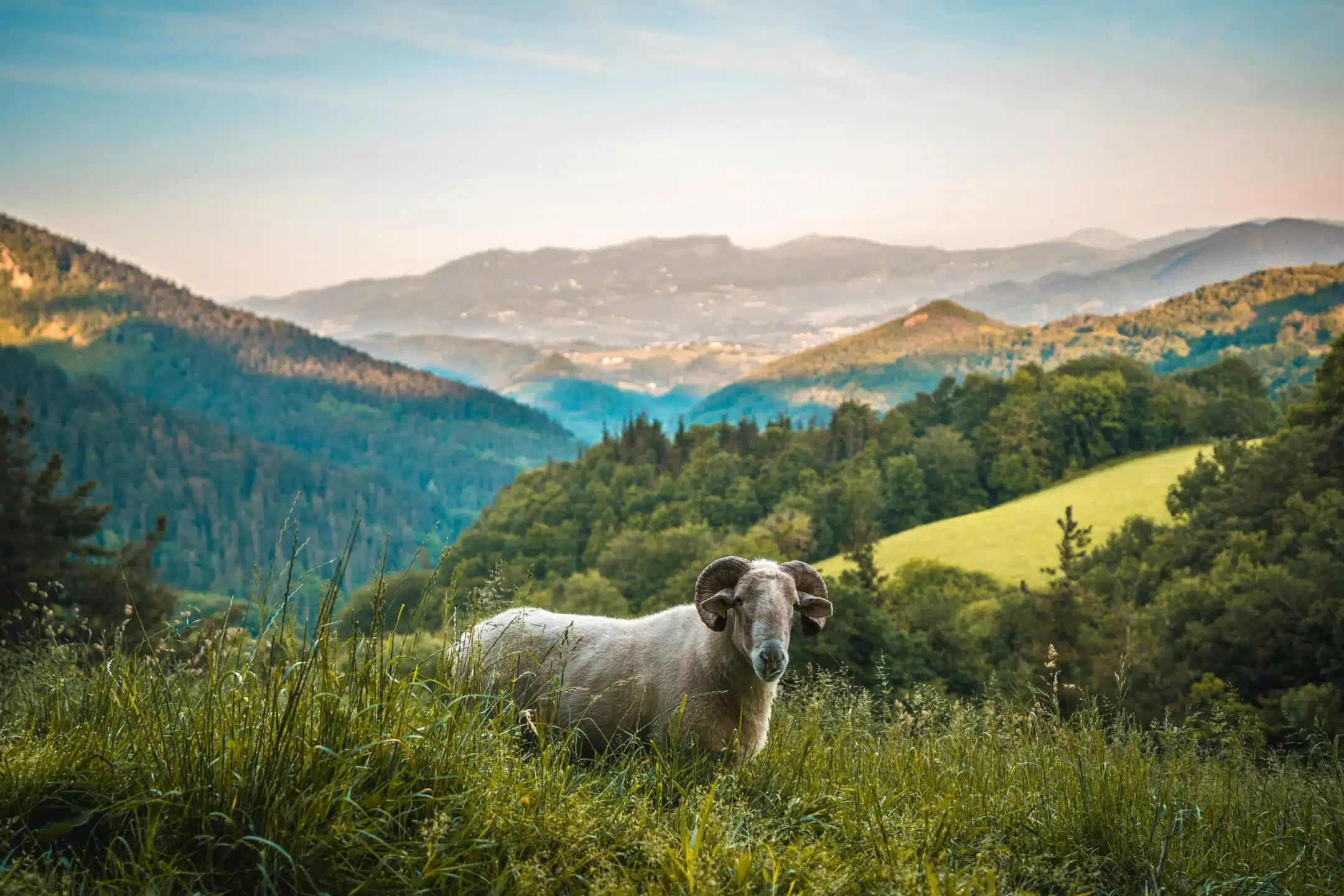
Explore the Basque Country with us on our weekend packages to Bilbao, San Sebastián and Navarre.
What to Eat in Andalusia – 17 Best Dishes
Citylife’s Guide to the Best Basque Food
Bilbao Bucket List: 9 Things to Do
San Sebastián Bucket List: 15 Things to Do
5 Places to Visit in Burgos
Exploring A Coruña
2.4 Discovering Catalonia & Valencia – Spain’s Cultural Gems
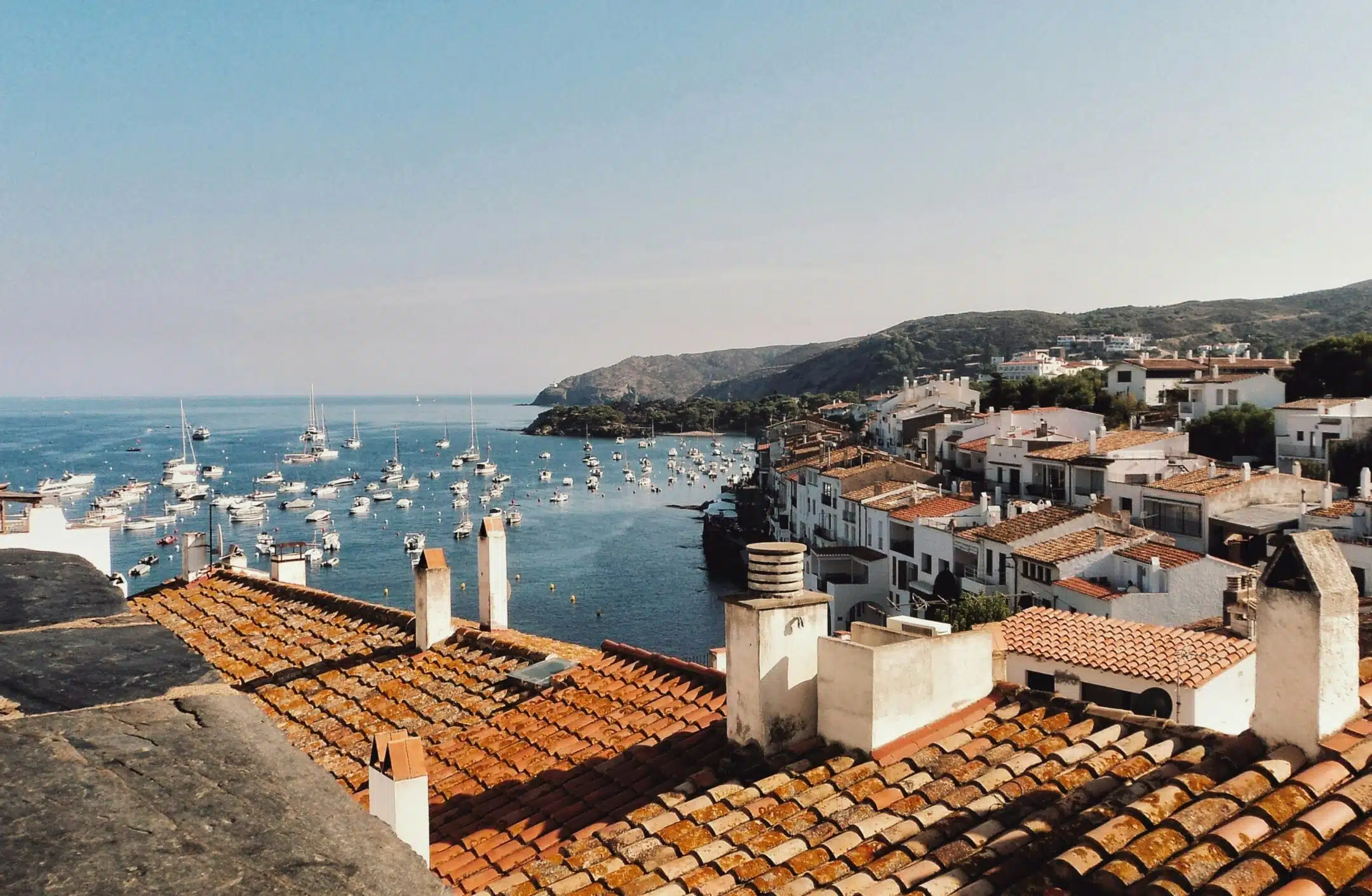
Catalonia, located in the northeastern corner of Spain, is a vibrant region famous for its unique blend of rich history, unique artistic heritage, and its tendency to lean towards a more contemporary culture. Catalonia easily stands out among its counterparts due to having its own language (Catalan) and a strong sense of identity that is equally reflected across the region in its festivals, cuisine, and traditions.
Valencia, the third largest autonomous community in Spain (behind Madrid and Catalonia) is home to a beautiful, fiercely independent culture and community. Being the birthplace of Paella, home to the largest aquarium in Europe, the famous Fallas festival and the supposed Holy Grail has put Valencia at the top of Spain’s tourism destinations.
Keep reading below to discover even more about Catalonia. In these guides, we will cover the most famous cities and everything you have to see while there!
Escape to the coast with us on our weekend packages to Valencia!
2.5 Day Trips from Madrid – Discover Spain Through it’s Small Towns
Spain’s capital is vibrant and exciting with what seems like an endless list of possibilities of things to do at all times of the day and night. But not far outside this metropolis are many wonderful little places just waiting to be explored.
From small towns and villages and stand-alone castles, palaces and monasteries. To hiking trails, natural pools, and golden coastlines. There are several no-fuss excursions available from Madrid that every visitor should take advantage of during their time in the big city!
Keep reading below to explore all the possible day trips you can enjoy from Spain’s Capital of Madrid. All you need is a train or bus ticket and you’ll be off!
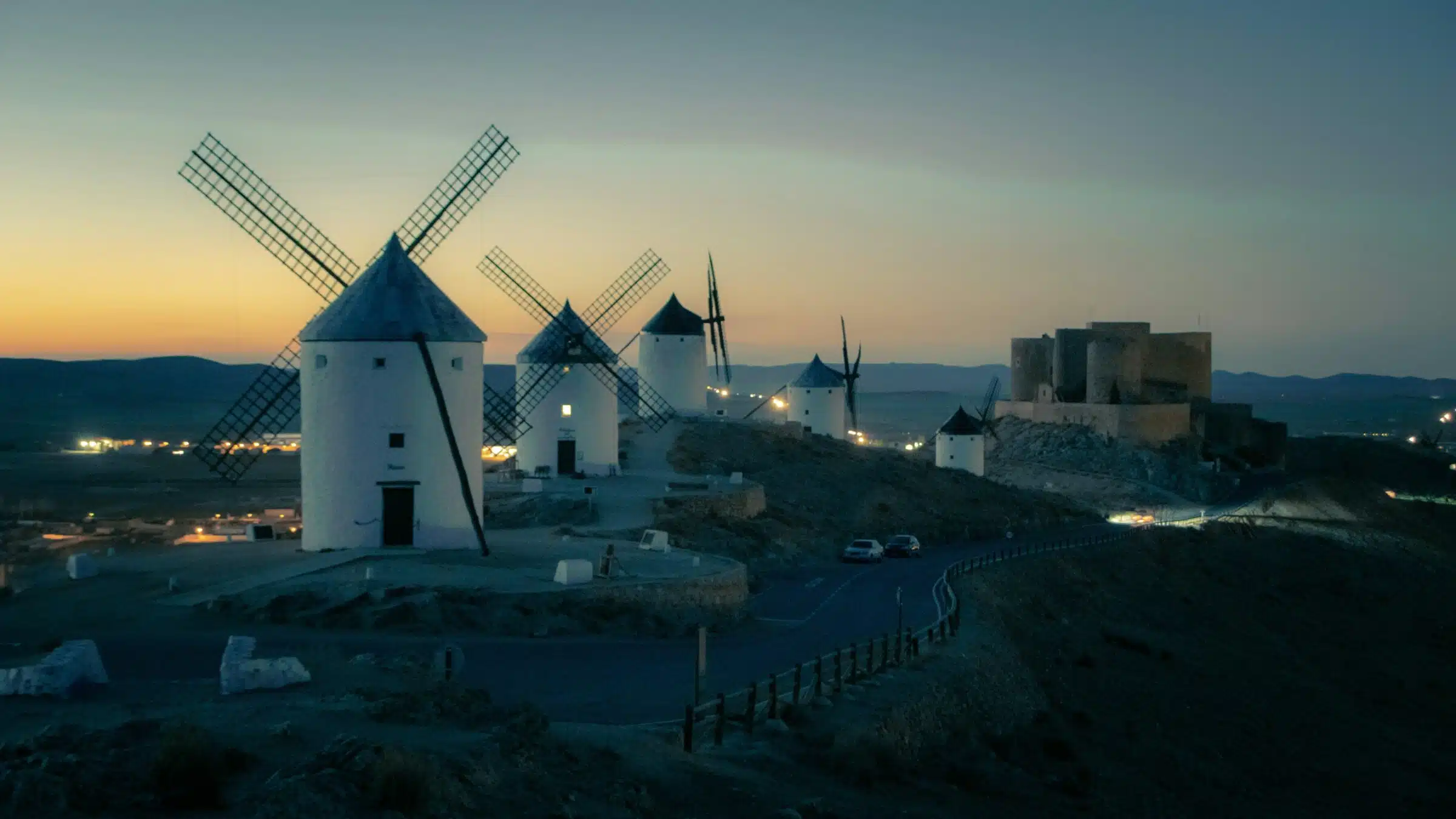
Explore the charming towns outside of Madrid on our day trip packages to Toledo, Segovia, Salamanca and more!
9 Medieval Castles in & Around Madrid!
The 7 Most Beautiful Day Trips from Madrid!
Best 10 Things to do in Salamanca, Spain
10 Things to Do in Toledo: The City of Three Cultures
9 Things You Can’t Miss When you Visit Segovia
6 Unique Beaches Near Madrid!
6 Natural, Fresh Water Pools in the Madrid Region!
Exploring Zaragoza
3. Things to do in Spain – Expert Tips
Spain is a country where every corner offers something exciting. From deep historic roots and a proud, vibrant, culture. To incredible cuisine and incomparable landscapes. In this section we will show you our favourite things to try and top places to visit so you can make sure your trip to Spain is everything you dreamed of.
3.1 Exquisite Spanish Wine Regions
While most people tend to think of Italy or France when it comes to top European wines, Spain is actually a treasure trove that shouldn’t be overlooked, especially by wine enthusiasts! With its diverse climates and landscapes, Spain’s wine regions offer an incredible variety of flavors and styles that represent the diversity of the country itself.
In this section, we will outline some of Spain’s top wine regions that you should visit if you’re planning a trip and which bottles we recommend you pick up for yourself!
Rioja

La Rioja is a famous wine region located in the north-central part of Spain and is best known for producing the well-known and loved red wine, Rioja. Rioja is a blend of the indigenous grape of Spain, Tempranillo, along with other fruity additives like Garancha, Mazuelo, and Graciano.
Ribera del Duero
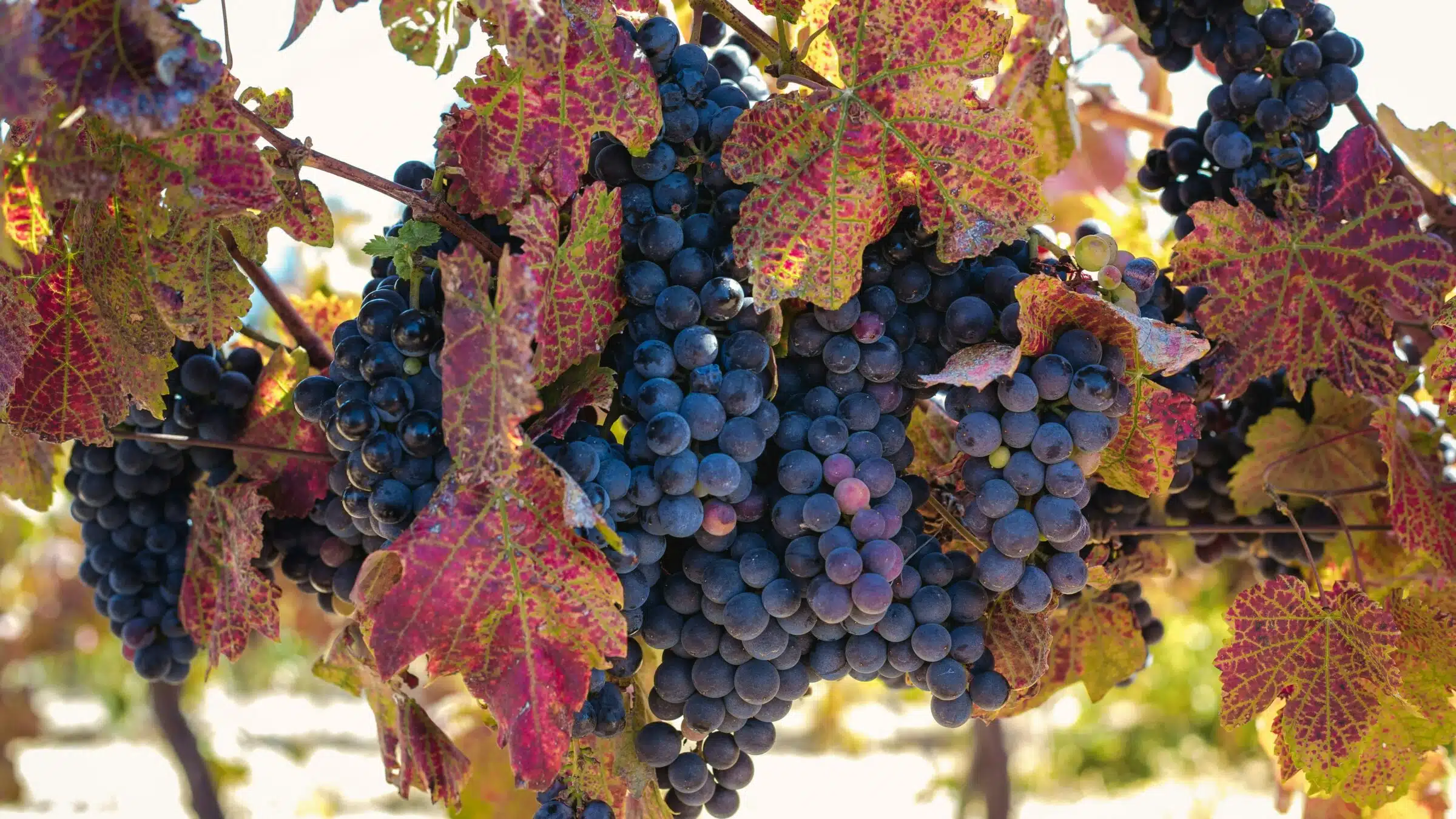
Just under a two hour drive from the center of Madrid, Ribera del Duero is a wine region that boasts its quality deep red wines. Now home to over 170 wineries, this region attracts wine-lovers around the globe who want to get a taste of the fine, Tempranillo-based wines.
Priorat
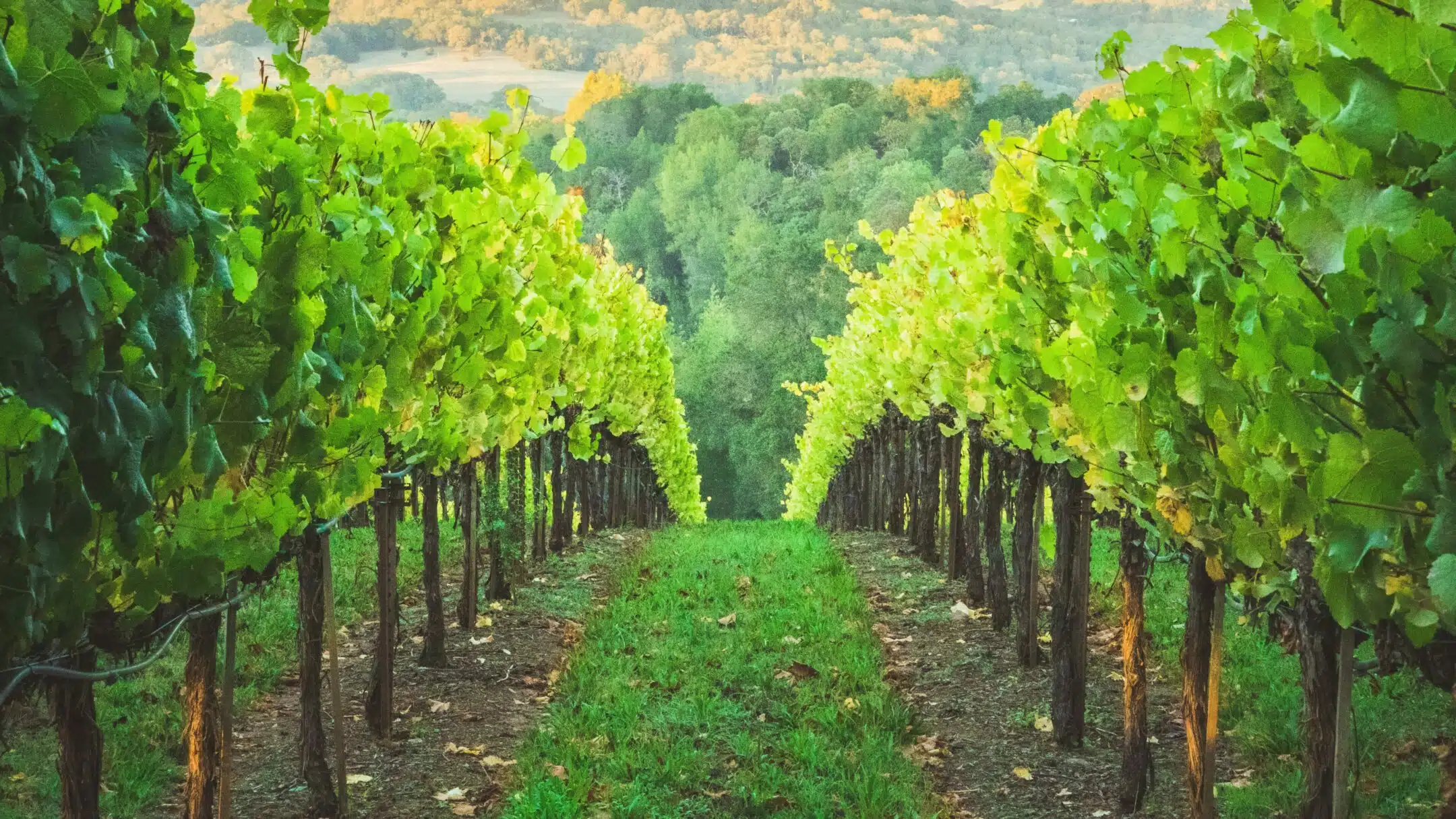
This Catalanion region is the perfect destination for wine-lovers. Near Tarragona, this tiny wine region is continues to grow in reputation and popularity for its rich red-wines, made from the Garancha and Carigan grapes. Today the region has nearly 100 wineries to visit and taste the delicious wines for yourself.
Rias Baixas
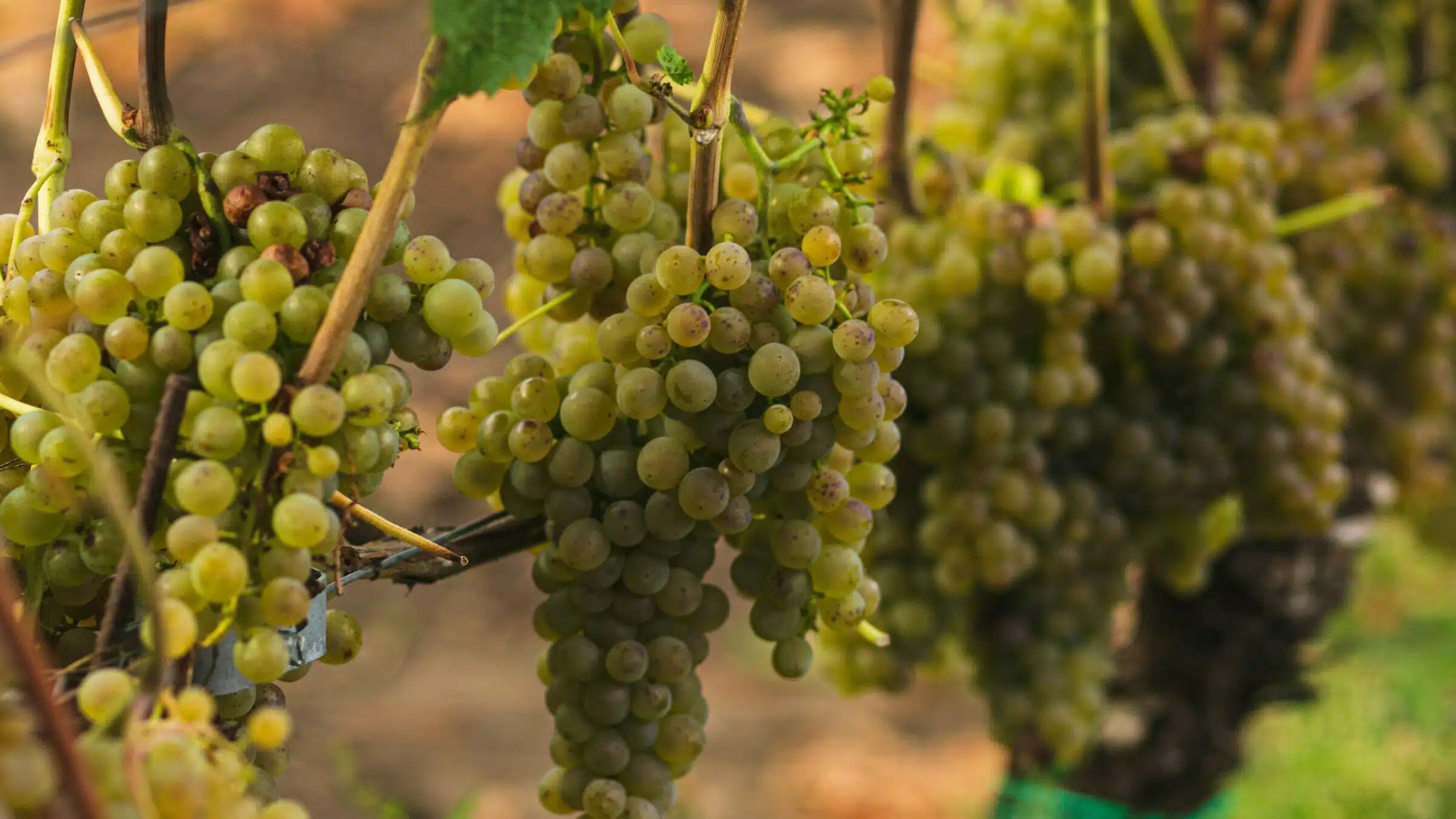
The name “Rias Baixas” translates into “lower rivers,” a name given to this region for its coastal inlets that makes up the landscape of the region. Located in Galicia, this northwestern wine zone is truly unique from the rest of the country. It produces the country’s best dry, white wines from the Albariño grape.
Penedes

Located just 30 minutes from Barcelona, this wine region is a must-visit for wine fanatics visiting Barcelona and nearby cities. Penedes is best known for producing the very popular Spanish version of champagne called Cava. Unlike the regions mentioned previously, Penedes is a producer of both red and white wines.
Navarra

Navarra is an area situated just north of Rioja. Being smaller and less famous, the wines from Navarra are less expensive but no less unique. Navarra is a part of the incredible Basque Country, where it experiences extreme weather much different from the west of the country allowing it to produce its famous dry rosé.
Toro
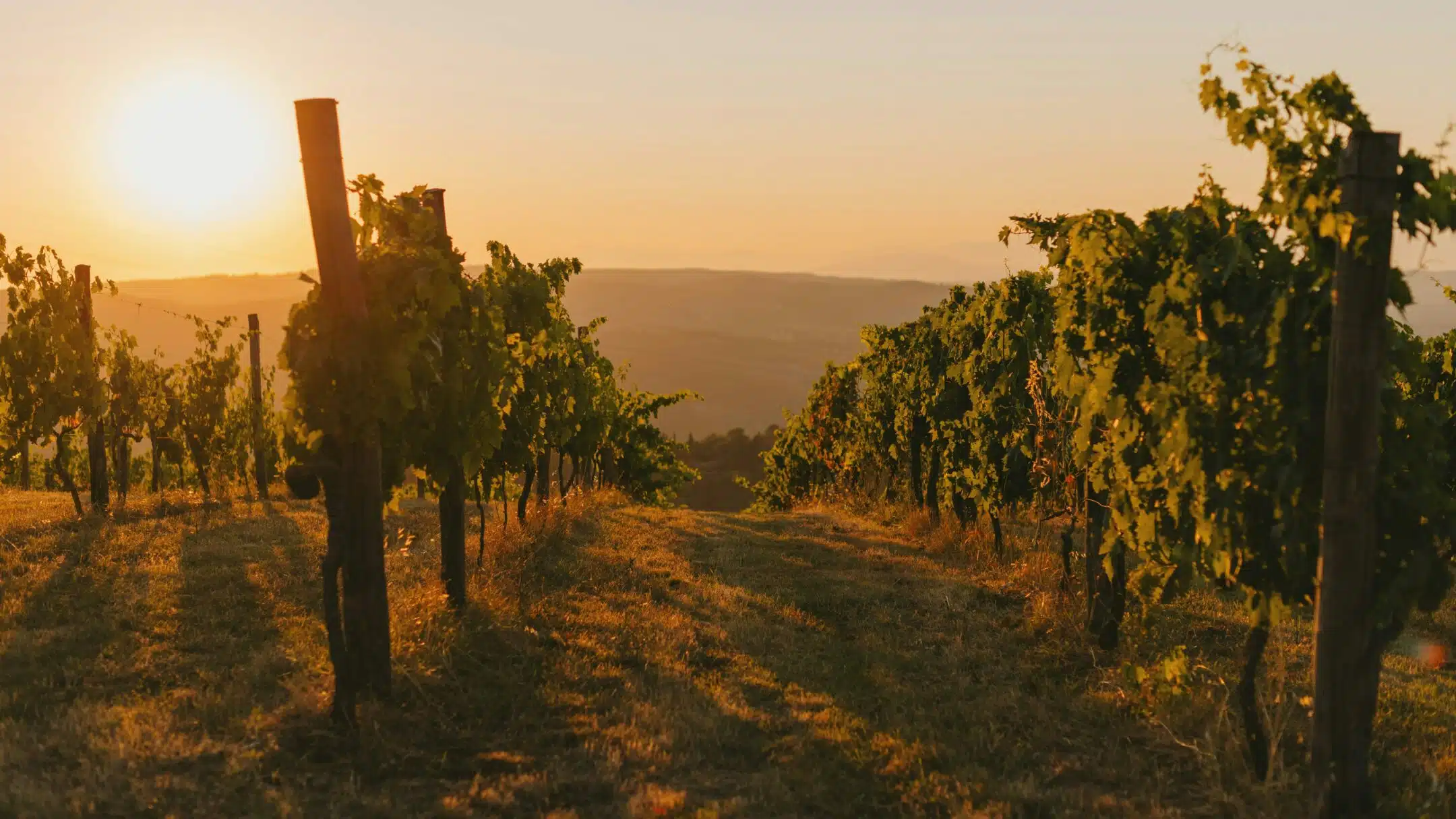
This wine region is located in Western Spain, and also produces wines of the Tempranillo variety. This region is known for its Toro Rosado and Toro Blanco. The region’s geographical location, high temperatures, sunshine, and low rainfall levels combine together to produce strong, high-alcohol wines.
Bierzo

Bierzo, a wine region located in the northwest of Spain, is known for its distinctive wines made primarily from the Mencía grape. Located in the province of León, its unique climate and diverse soil creates the region’s deeply coloured red wines that are highly aromatic with cherry, berry and earthy undertones.
Rueda

Rueda is located in the high, dry regions of Castilla y Leon. The grape vines here have to work hard to grow which is reflected directly in its wines. Rueda is known for dry, white wines, made mainly from the Verdejo grape, which occupies nearly 90 percent of the land. Rueda specializes mostly in its white wines.
3.2 Our Top 12 World Heritage Sites in Spain
Since 1972 the United Nations Educational, Scientific and Cultural Organization has been designating sites of cultural, historic or scientific significance with the goal of preserving and protecting them for future generations. Impressively, Spain has been honoured with the and largest amount of UNESCO World Heritage Sites in the world (behind Italy) and many of them can be visited today.
In our list below we cover 12 of the top UNESCO World Heritage Sites in Spain. From majestic cathedrals and ancient monuments to imposing castles and renowned works of art. All of which are among the best things to see in Spain if you ever plan to visit!
1. Alhambra Fortress of Granada
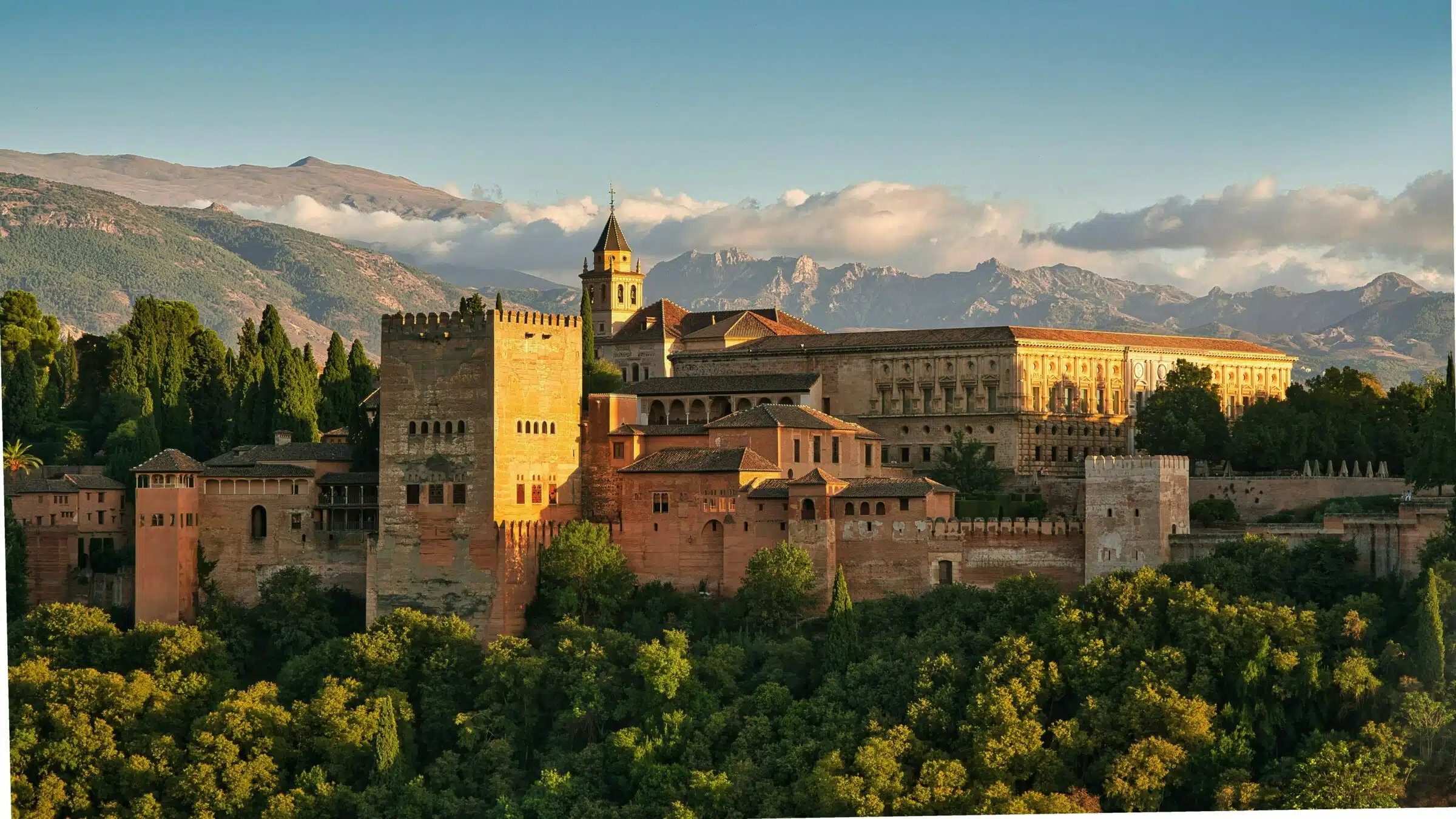
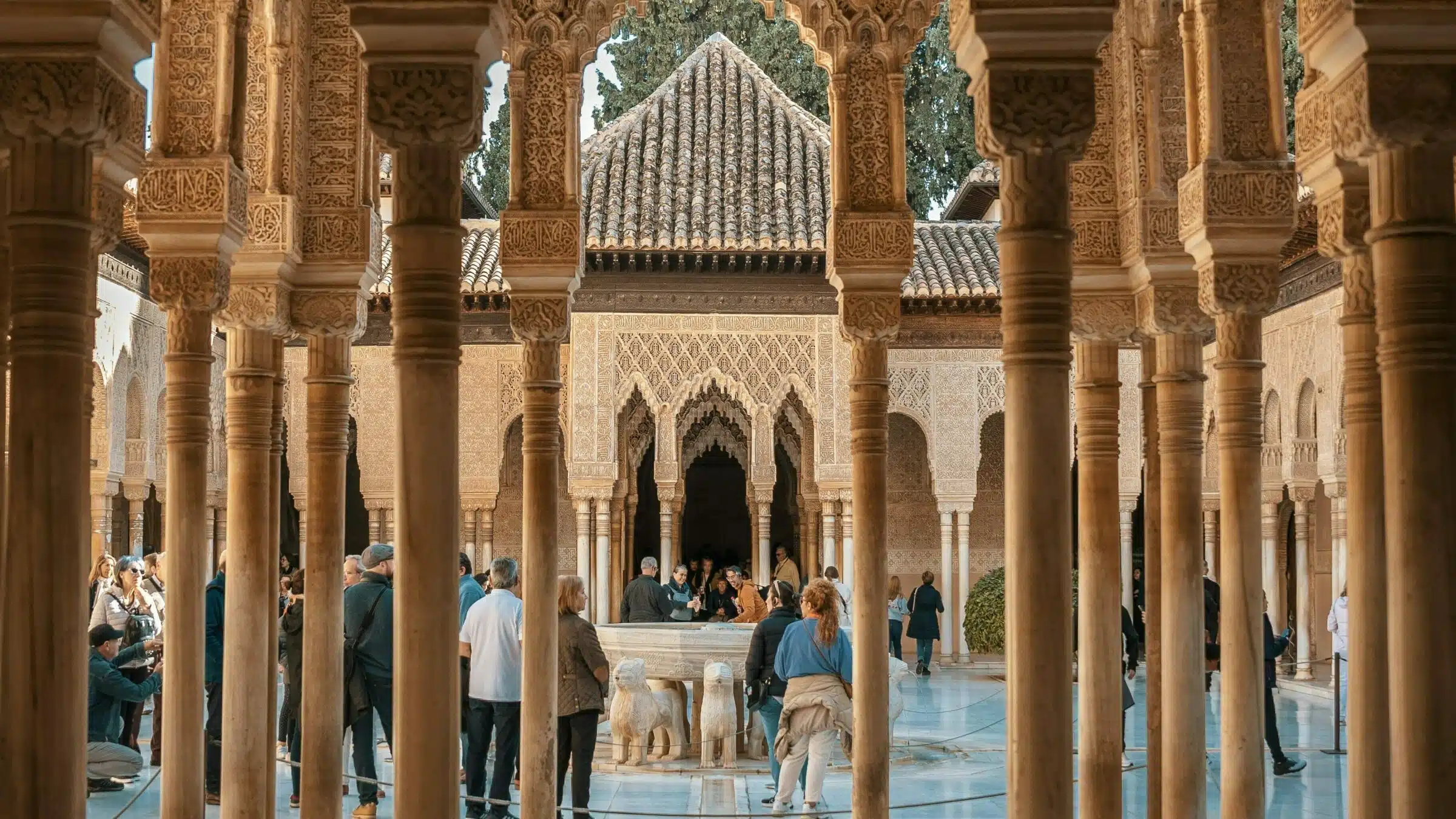
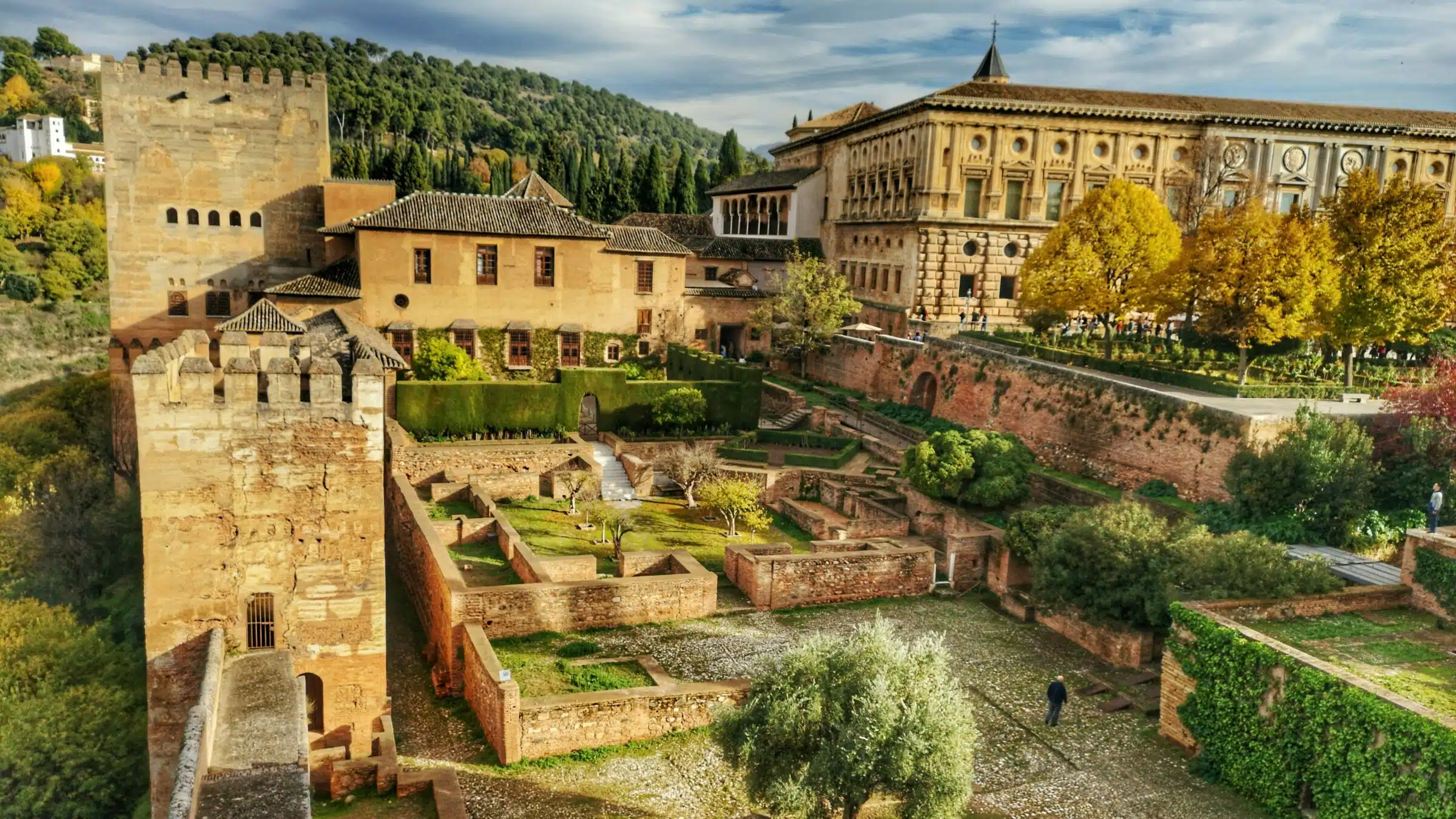
Visit the breathtaking Alhambra Fortress during your free time on Citylife’s Andalucía trip packages! See all upcoming Spain tours in our Spain Travel Calendar.
UNESCO World Heritage Site since 1984
The Alhambra is a stunning palace/fortress that represents Spain’s incredibly diverse Islamic roots. Originally constructed in the mid-13th century by the Nasrid sultans (the last Muslim dynasty in Spain), the Alhambra served as a royal palace, fortress, and a small city. Its impressive architecture features intricate stucco work, beautiful courtyards, hand placed mosaics and serene gardens that will send any visitor back to Caliphates of old.
Get your tickets to the beautiful Alhambra on the official website.
2. Toledo – A City of Three Cultures
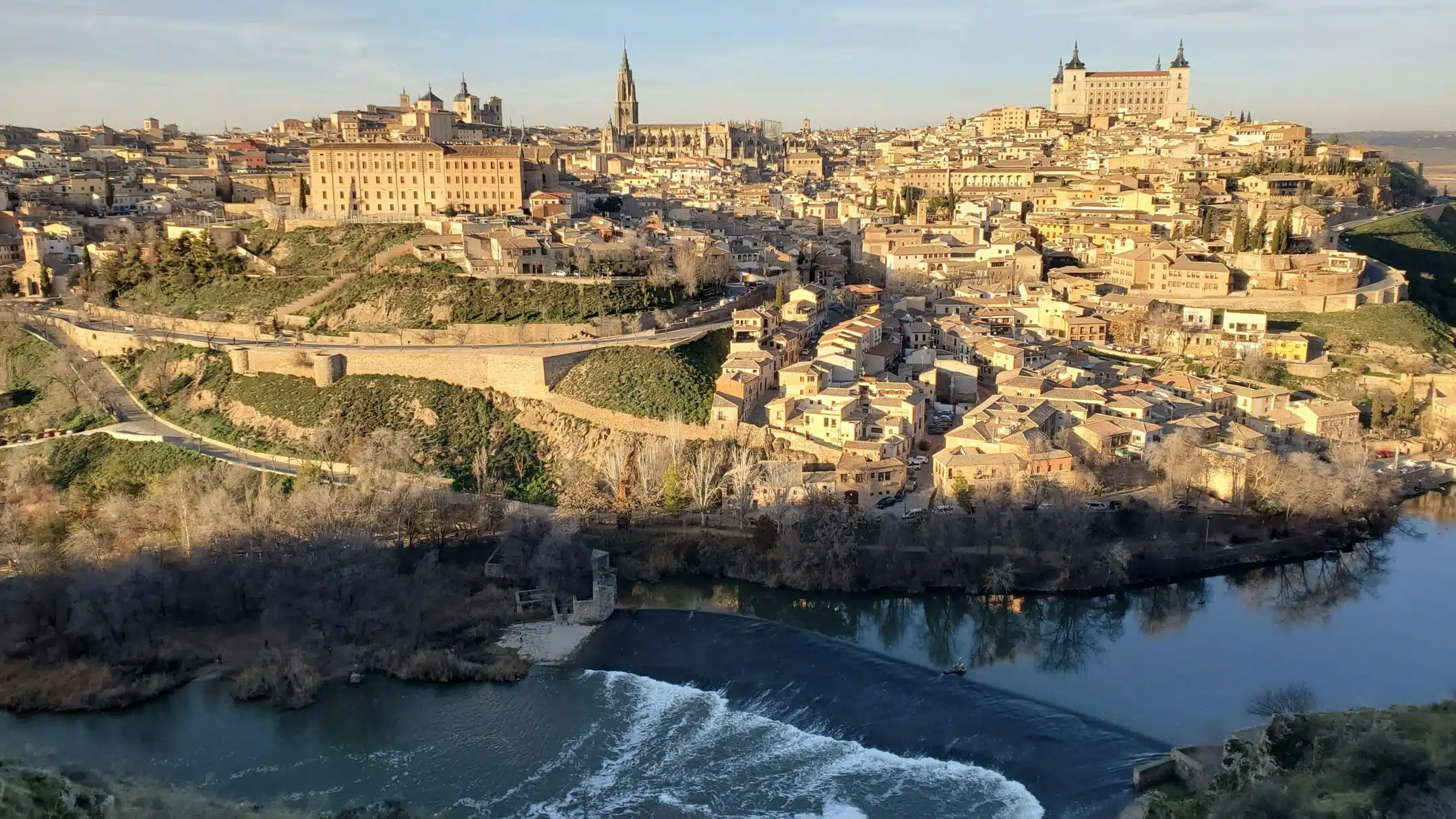
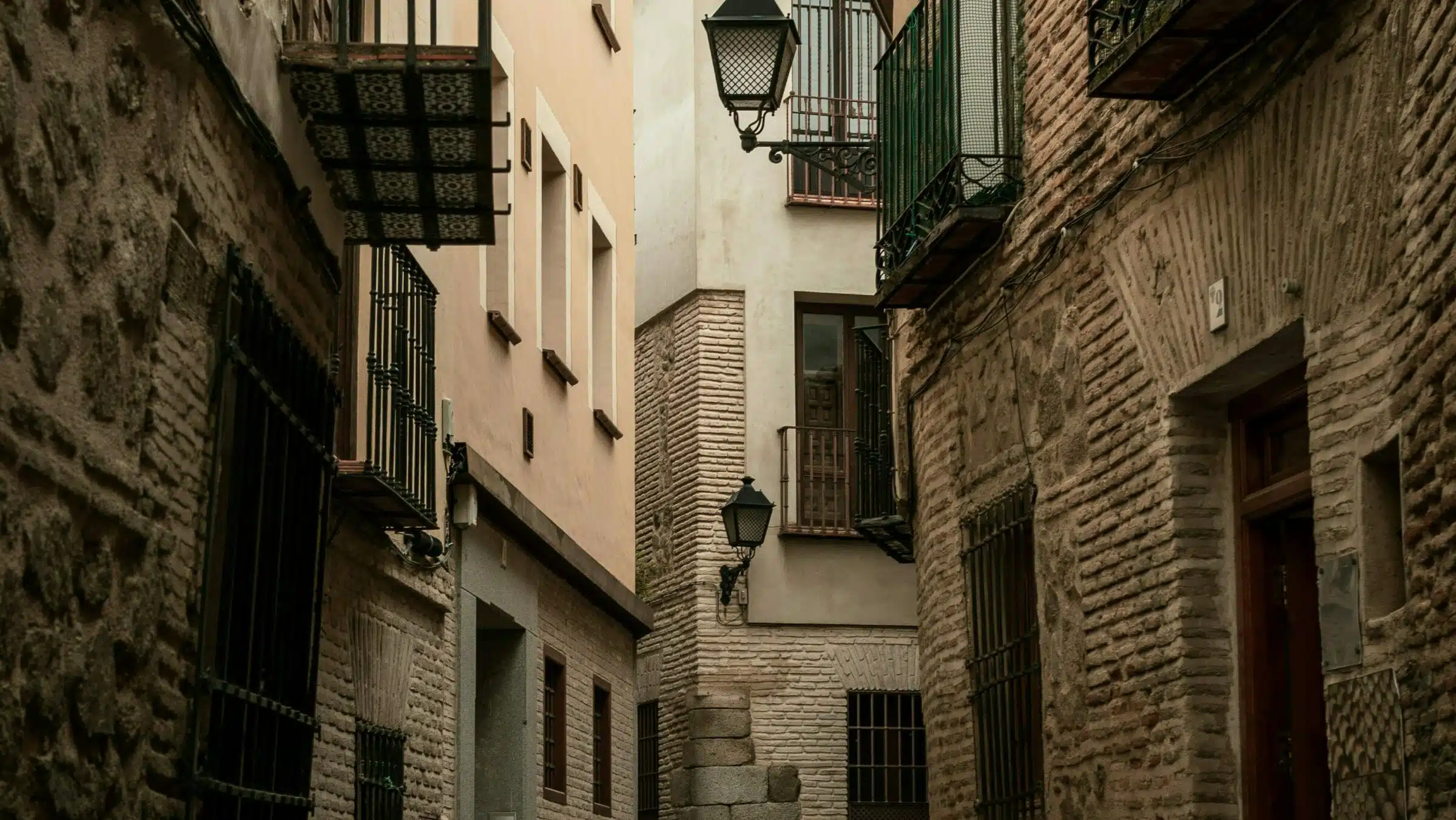
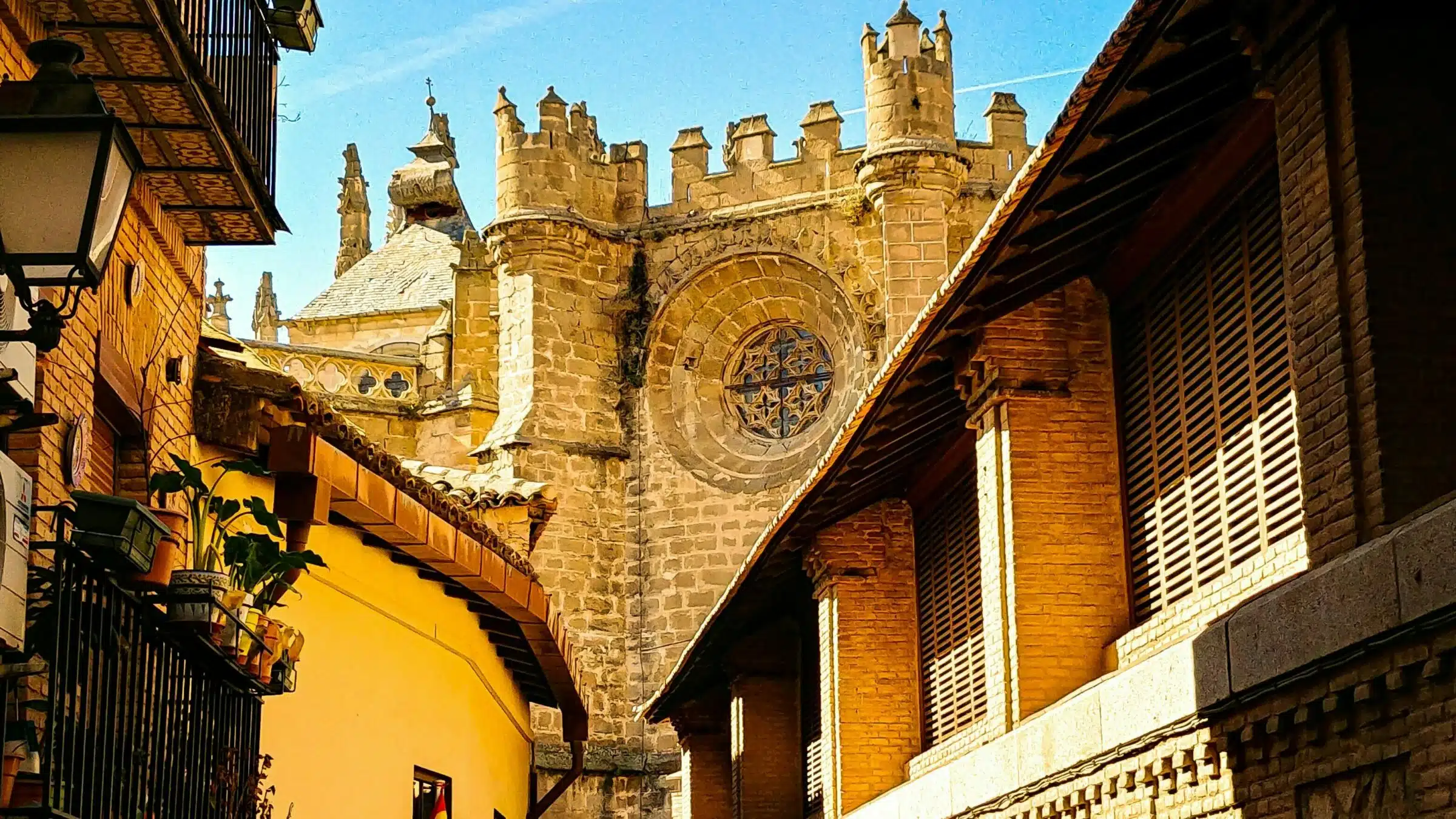
Explore the historic city of Toledo and other incredible cities on Citylife’s day trip packages! See all upcoming Spain tours in our Spain Travel Calendar.
UNESCO World Heritage Site since 1986
The city of Toledo, founded on a hilltop in the very center of Spain, is a living representation of the country’s incredibly diverse cultural heritage. Known as the “City of Three Cultures,” Toledo was a place where Christian, Muslim, and Jewish communities coexisted and thrived together in times when such a thing was not so common. This incredible harmony is seen in many forms, from street names to local customs. But where it’s most apparent is in the city’s impeccable architecture. Buildings like the stunning Gothic Cathedral, represent the Christian empire. The Royal Alcázar which symbolizes the Arabic kings of old. And the Synagogue of Santa María la Blanca, located in the famous Jewish quarter of the city.
3. Burgos Cathedral
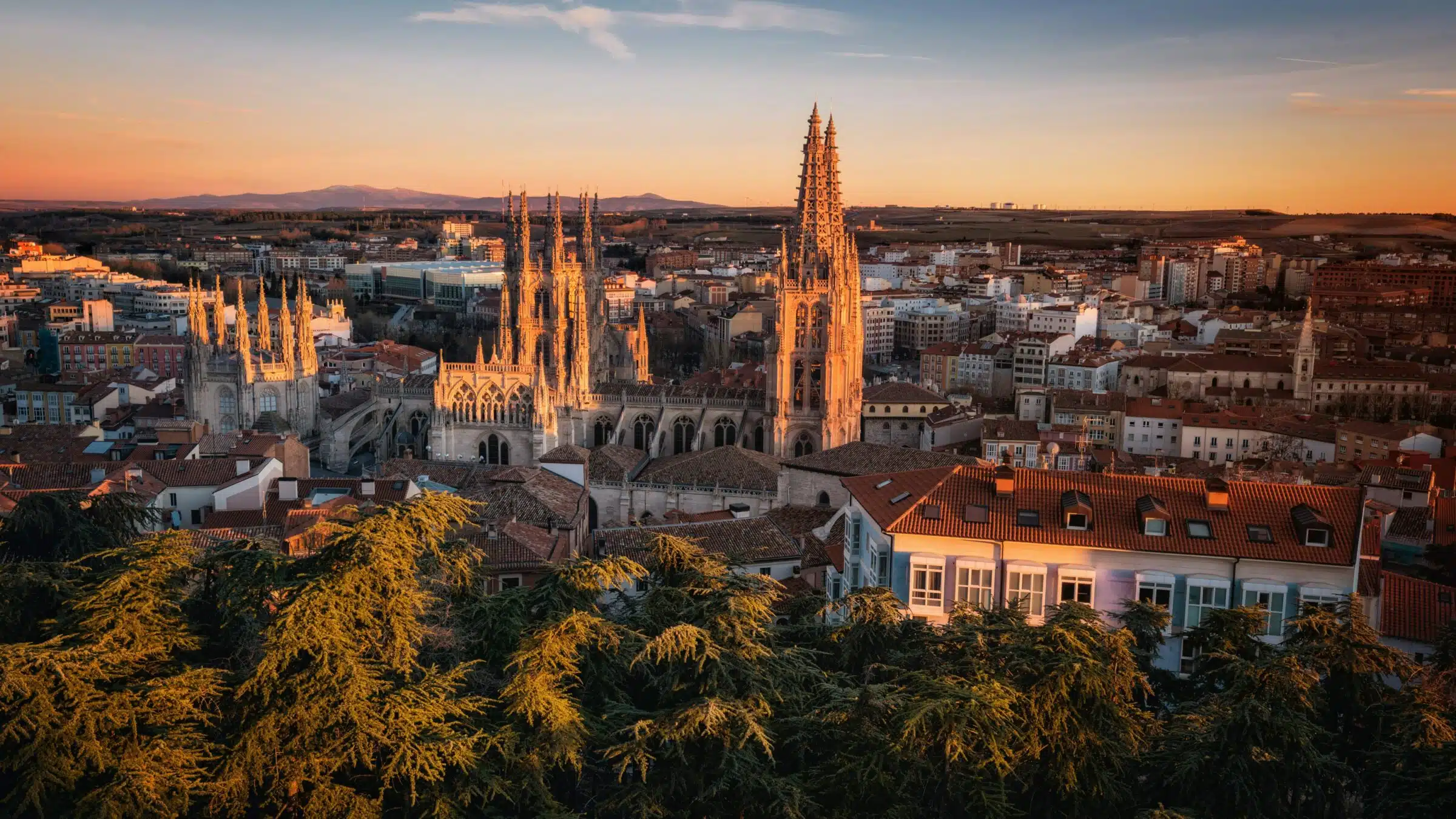
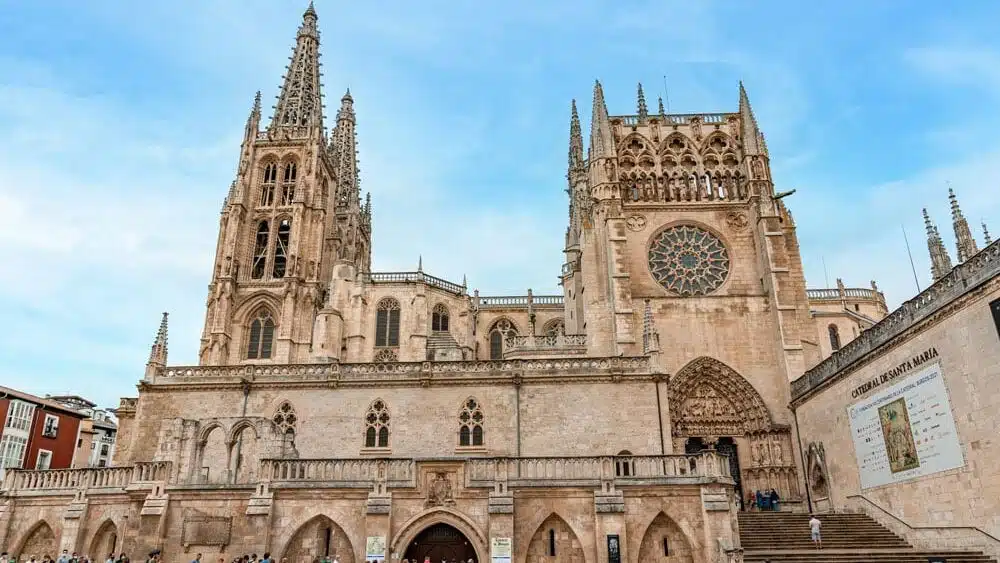
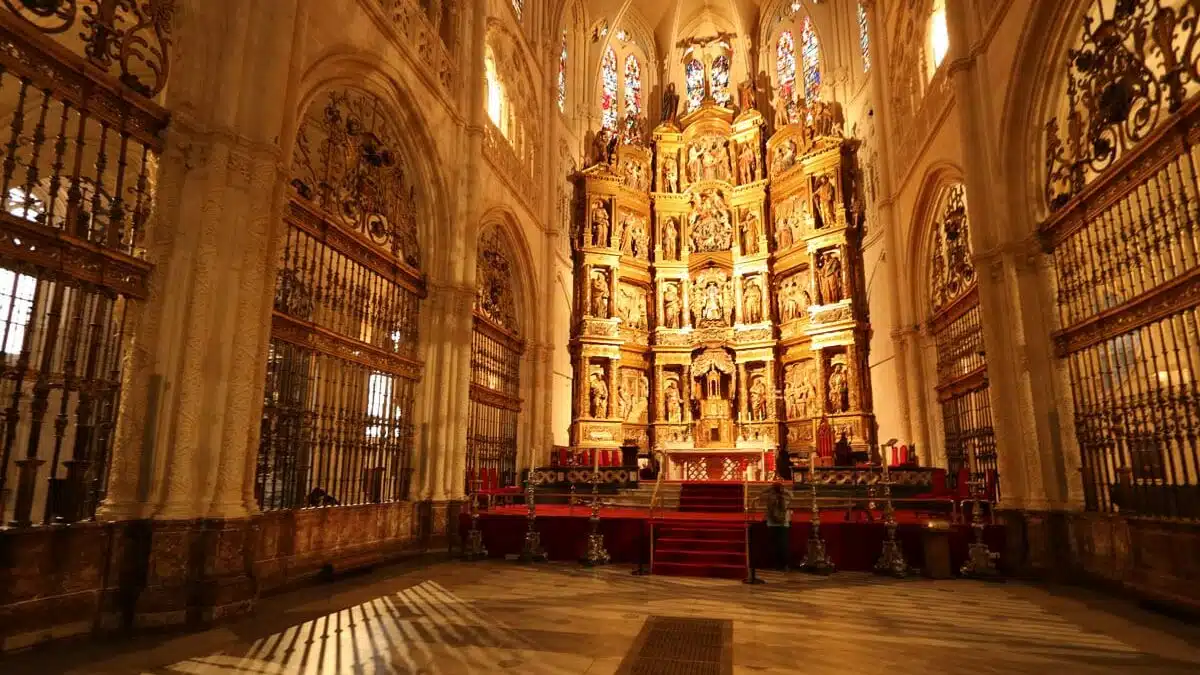
UNESCO World Heritage Site since 1986
Located deep in the region of Castile and León, the Burgos Cathedral is a stunning piece of Spain’s history and culture. Constructed back in 1221 in the Gothic style, its grand facade, beautiful stained glass windows and detailed spires take visitors through centuries of art and architecture. In addition to being a significant spiritual and historic center in the country, it also plays a part in one of Spain’s most famous legends by being the final resting place of El Cid. A legendary Castillian knight who lead many successful battles for Spain in the 11th century.
4. Monastery of El Escorial



Spend a tranquil morning in El Escorial and other incredible cities on Citylife’s day trip packages! See all upcoming Spain tours in our Spain Travel Calendar.
UNESCO World Heritage Site since 1984
Built in the late 16th century under the reign of King Philip II, the Monastery of El Escorial serves as a royal palace, a school, a monastery and a royal library. Its grand Renaissance design, complete with a stunning basilica, intricately decorated royal pantheon, and an extensive collection of art and manuscripts perfectly represents the pinnacle of Spain’s Golden Age. The monastery is situated among the mountains of Guadarrama, isolating it from the chaos of the capital and offering visitors a relaxing experience.
Get your tickets to the impressive El Escorial Monastery on the official website.
5. Mosque-Cathedral of Córdoba



Visit the Cordoba Mosque and other incredible monuments on Citylife’s Andalucía trip packages! See all upcoming Spain tours in our Spain Travel Calendar.
UNESCO World Heritage Site since 1984
The Mezquita de Córdoba is a unique site not just for Spain, but Europe and beyond. Originally constructed as a grand mosque in the 8th century under the Umayyad Caliphate, it was one of the largest and most beautiful mosques in the world. Making Cordóba an epicenter of culture, education and religion. Following the Christian Reconquista in the 13th century, it was converted into a cathedral. But unlike many of the converted mosques that exist around Spain, the original structure was not demolished. In this case, the mosque was preserved and the cathedral was built in its center.
Get your tickets to the outstanding Mosque-Cathedral on the official website.
6. Segovia – An Acient City
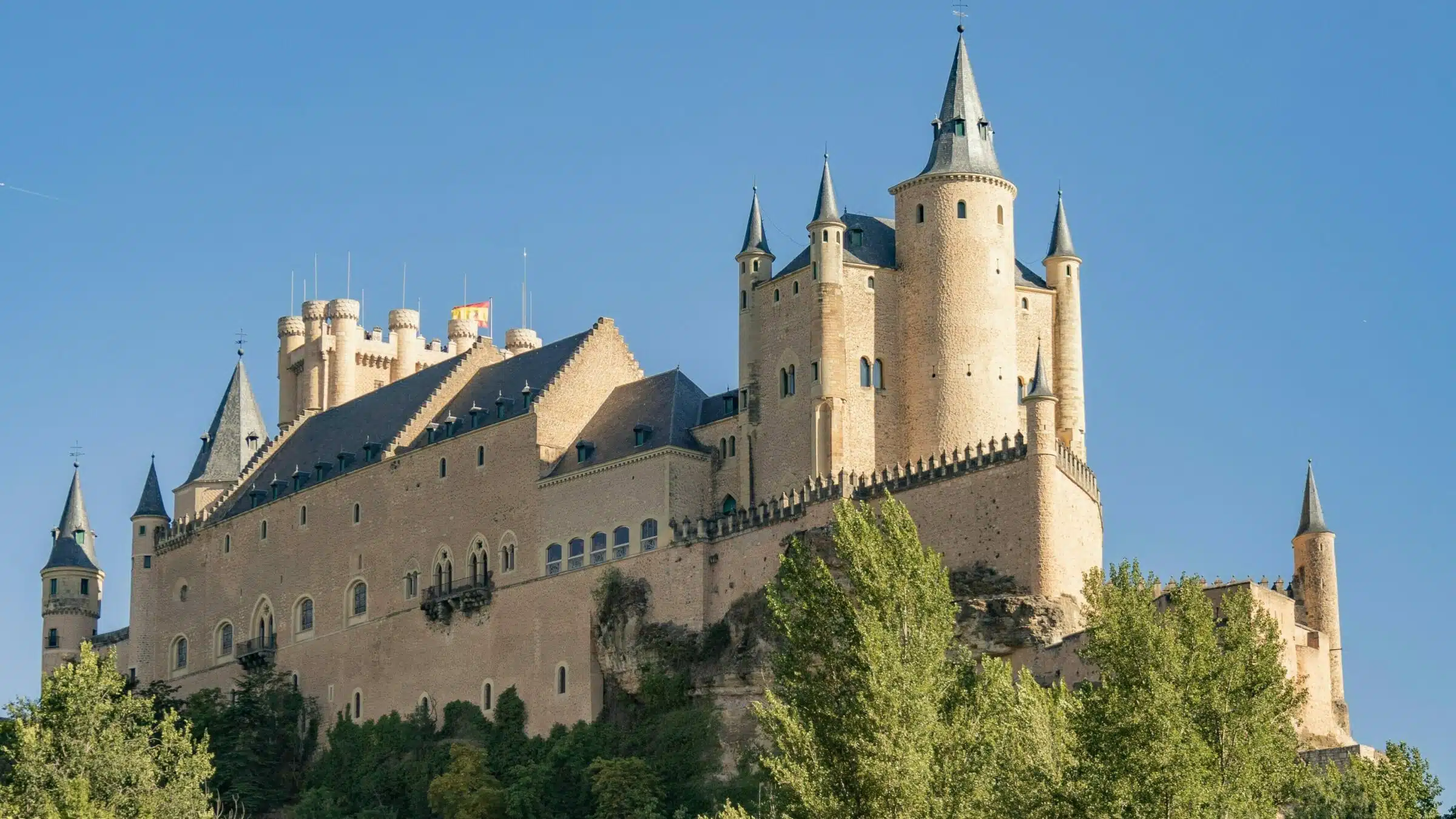
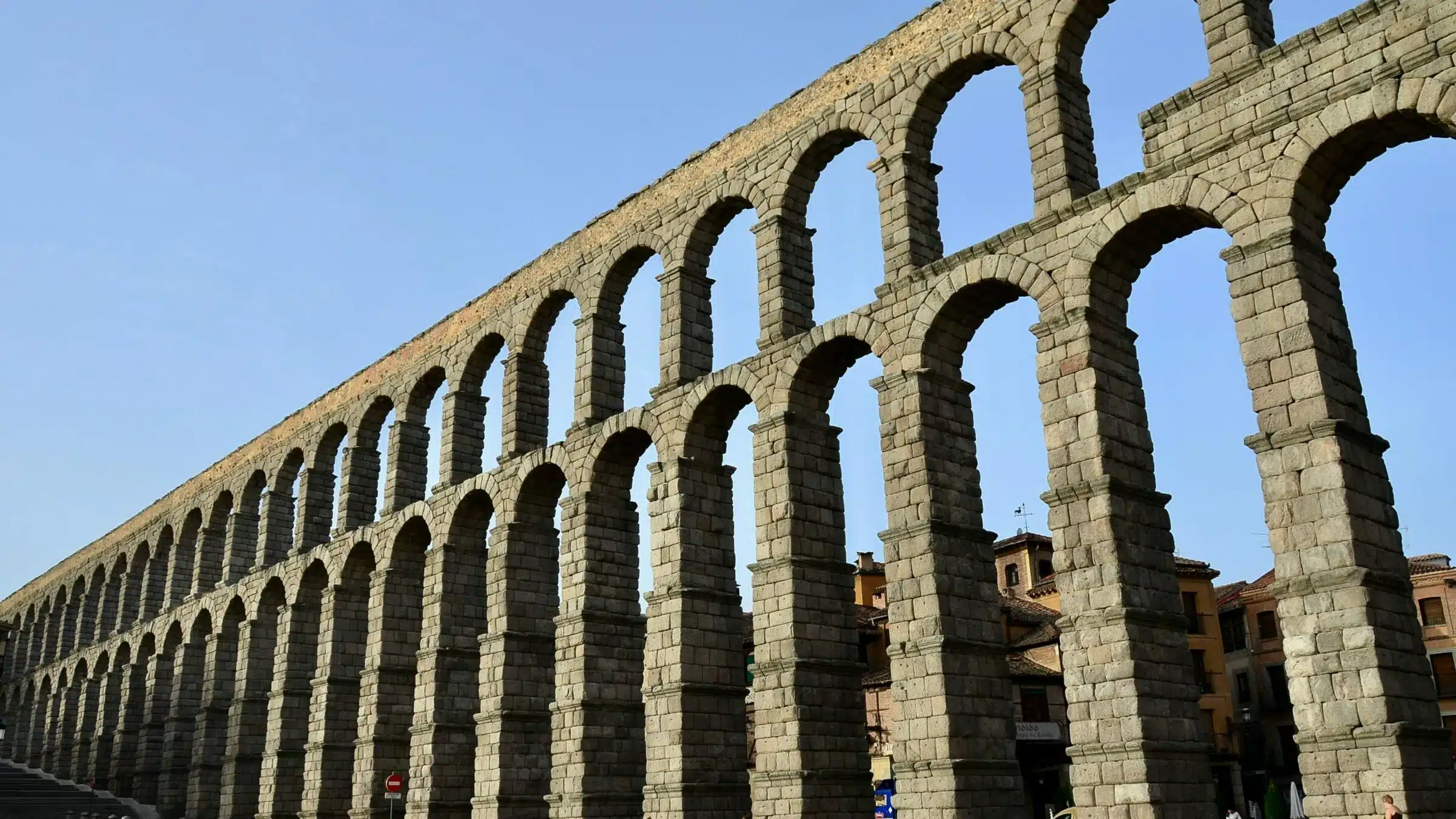

Explore the historic city of Segovia and other incredible cities on Citylife’s day trip packages! See all upcoming Spain tours in our Spain Travel Calendar.
UNESCO World Heritage Site since 1985
Segovia is a picturesque Spanish town that transports visitors through centuries of history. Its dominating Roman Aqueduct dates back to the 1st century AD and is one of the most complete aqueducts outside of Italy. In addition to the aqueduct, Segovia’s Old Town offers narrow winding streets, charming squares, medieval buildings and a gigantic Gothic cathedral. Of course, visitors can’t miss Segovia’s crown jewel – the Alcázar castle which seems to have come straight from a fairy-tale.
Get your tickets to the picturesque Alcazar of Segovia on the official website.
7. Santiago de Compostela
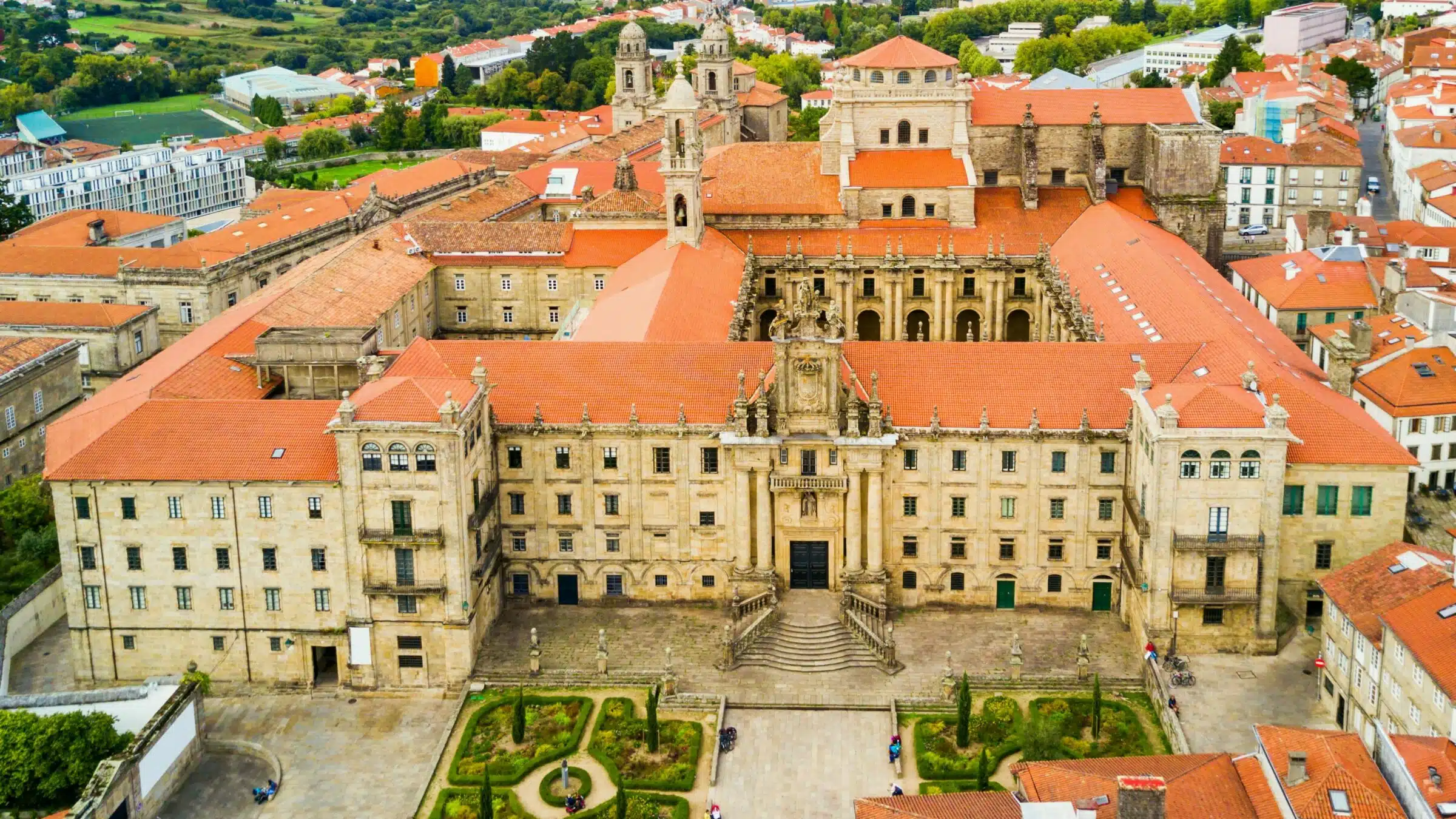
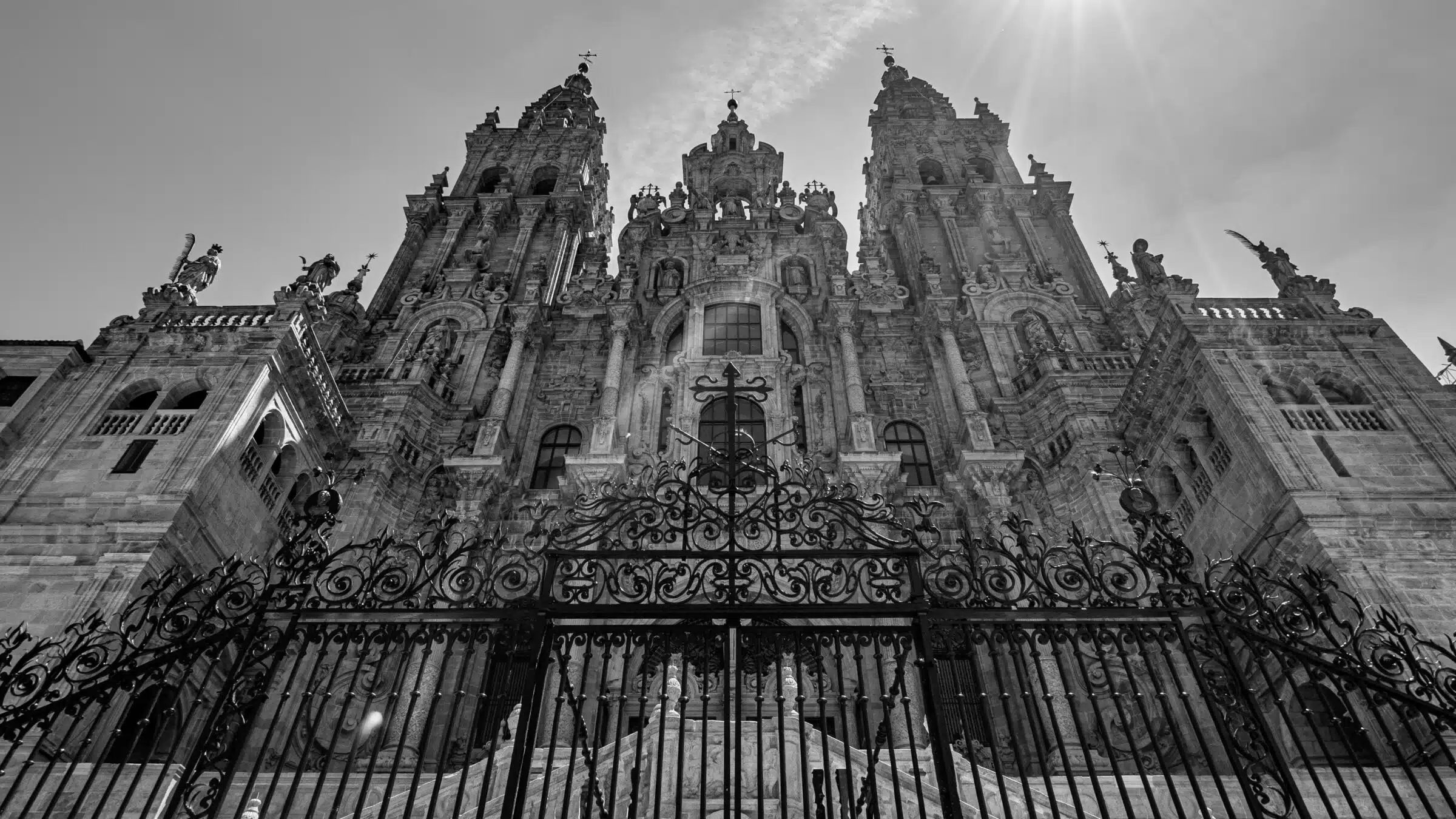
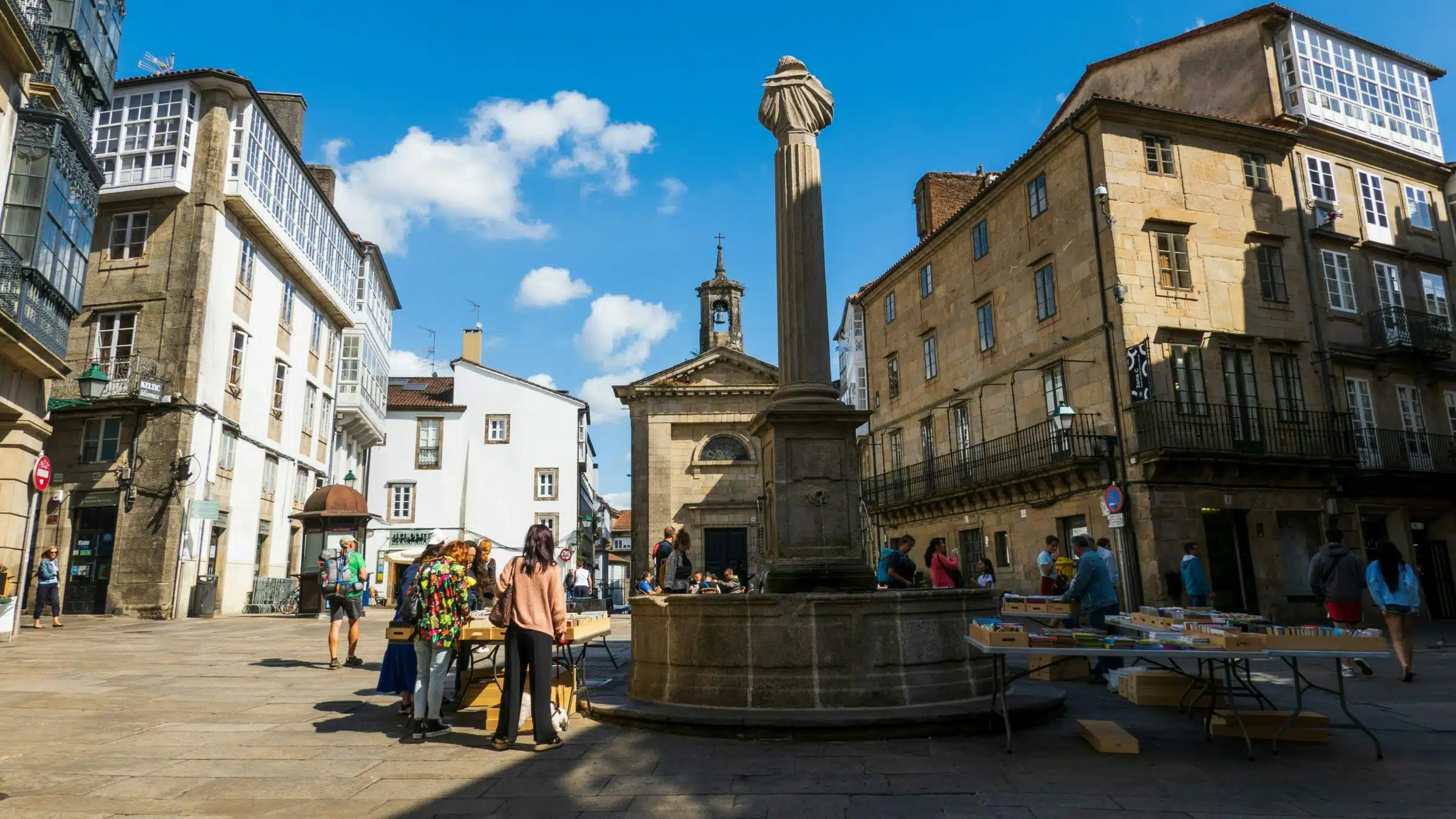
UNESCO World Heritage Site since 1985
Home to the resting place of Saint James the Apostle, Santiago de Compostela is an incredibly significant city for both European and Catholic history. For centuries, pilgrims from all corners of the world would travel along the Camino de Santiago, seeking spiritual solace and closeness with God at the city’s famous Cathedral. The unique blend of Romanesque, Gothic, and Baroque architecture, along with its deep-rooted traditions, makes Santiago de Compostela a living testament to Spain’s rich religious and history.
Get your tickets to the famous Cathedral de Santiago on the official website.
8. Camino de Santiago
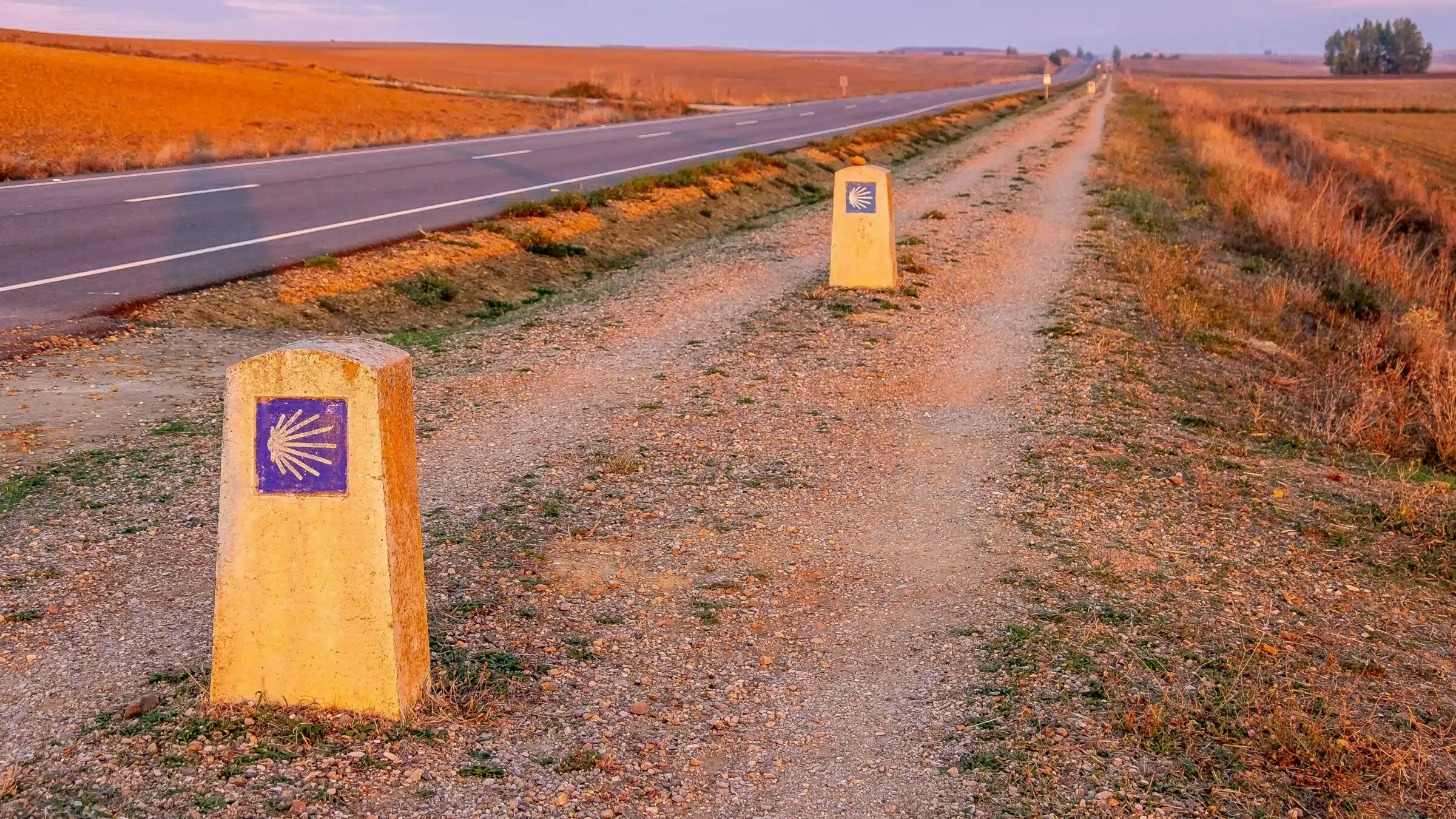

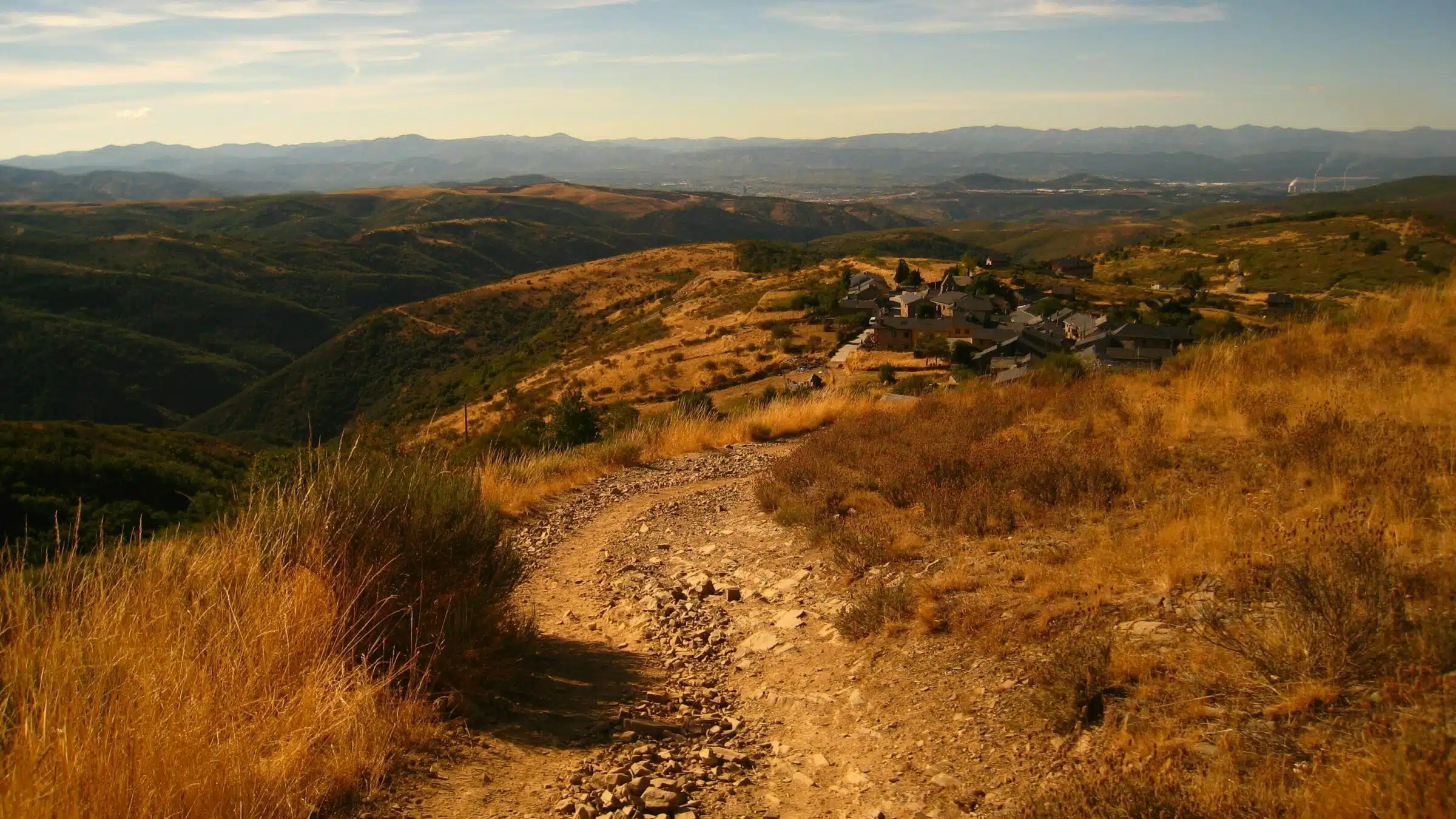
UNESCO World Heritage Site since 1993
The Camino de Santiago, also known as the Way of St. James, is more than just a pilgrimage; it’s a profound journey steeped in centuries-old tradition and spiritual significance. The Camino traces its origins to the 9th century when the tomb of Saint James the Apostle was discovered, sparking waves of pilgrims seeking penance, spiritual growth, and adventure. You’ll find marked paths all across Europe leading thousands of people for the last several hundred years to Spain’s Santiago de Compostela.
Embark on the incredible Camino de Santiago by planning your route on the official website.
9. Alcazar de Sevilla
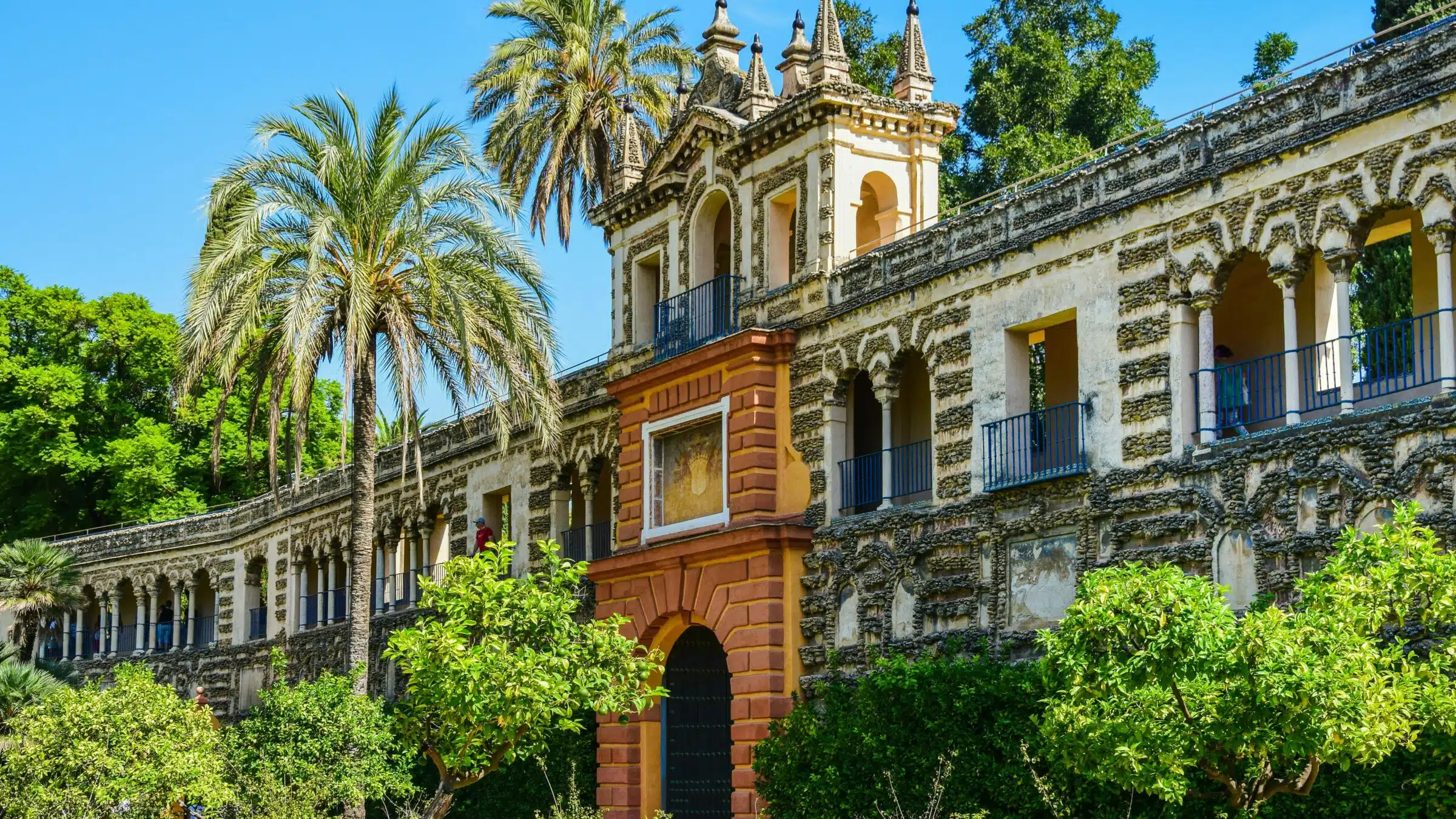
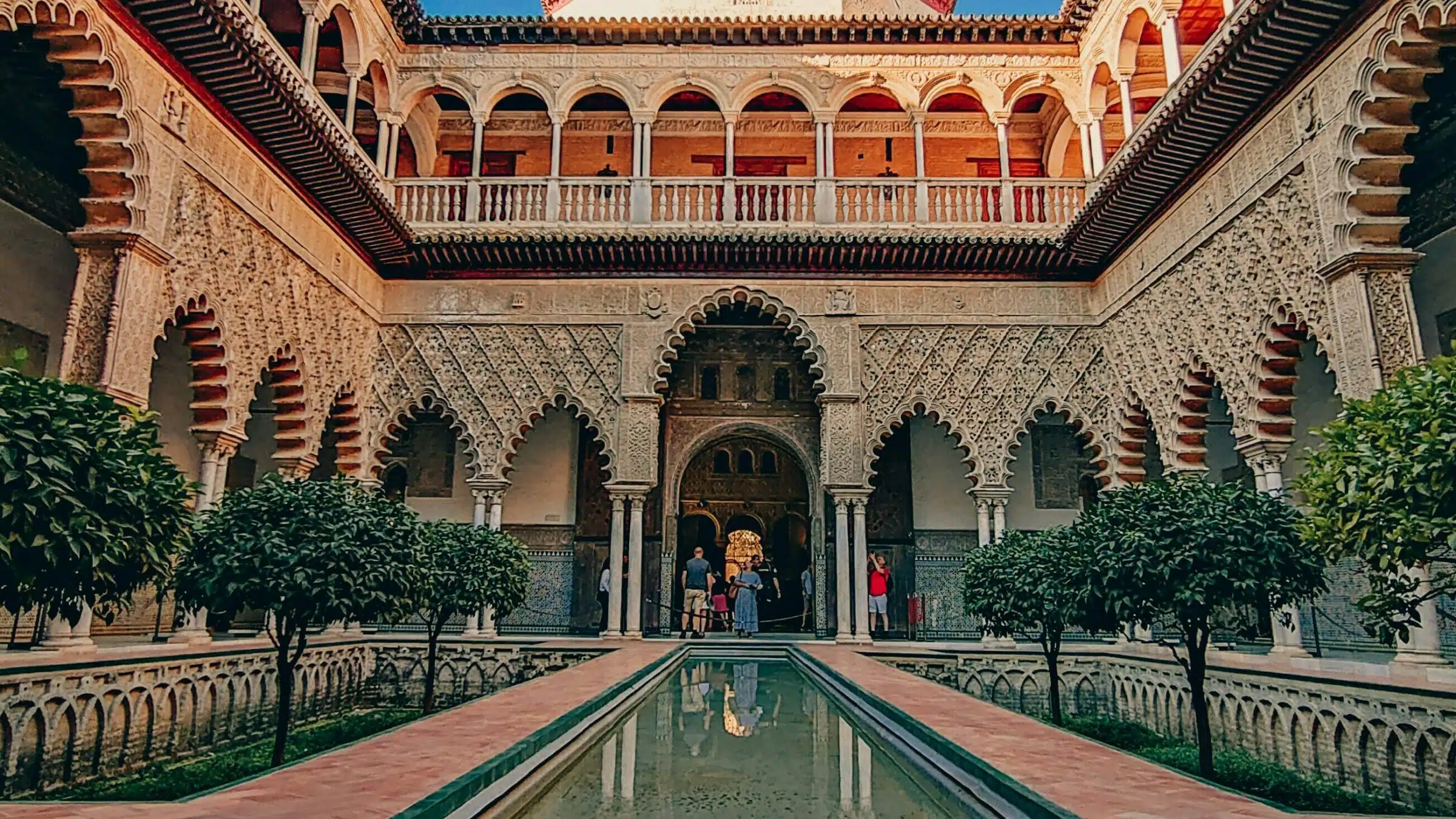
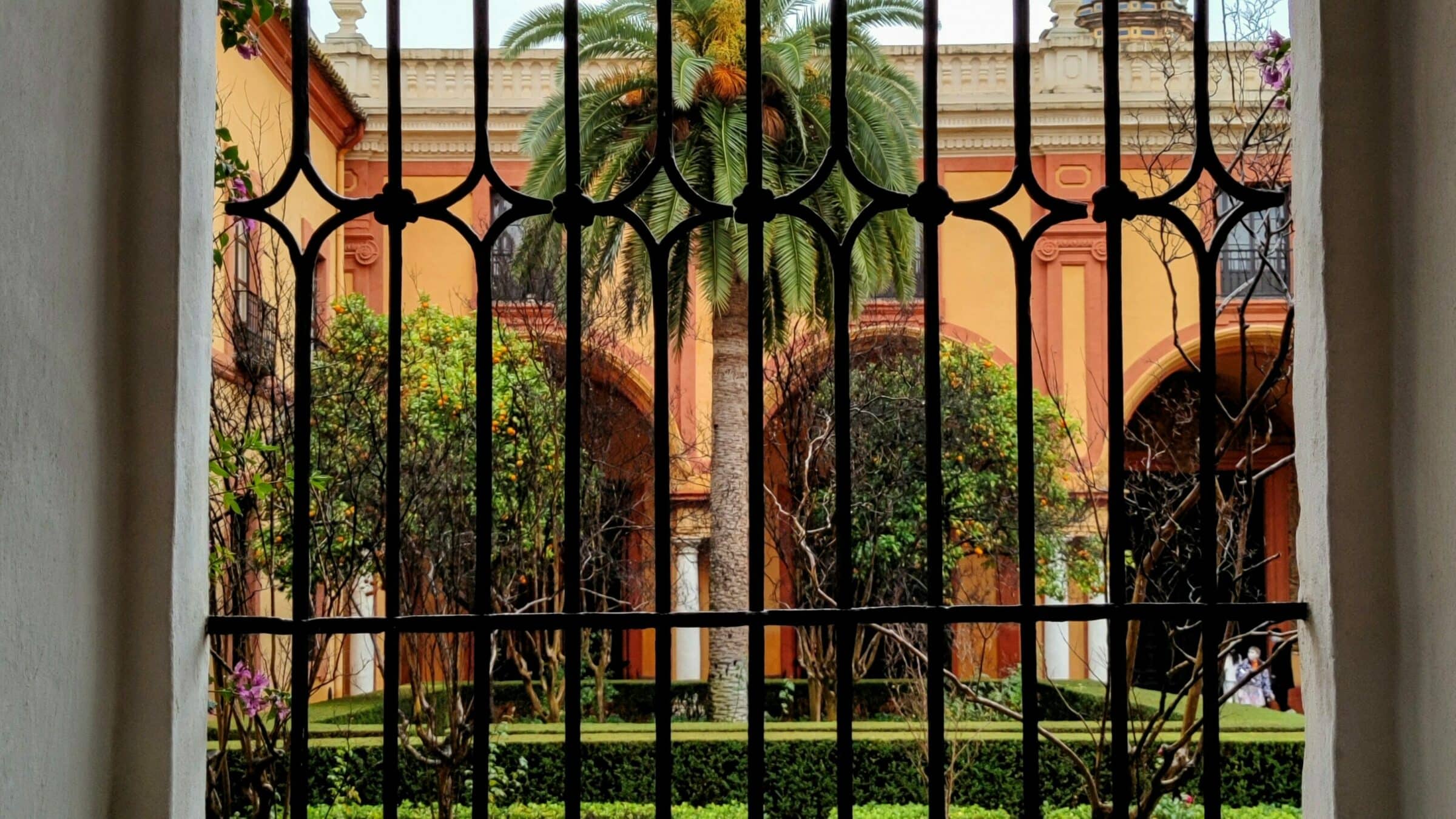
Visit the Alcazar de Sevilla and other incredible monuments on Citylife’s Andalucía trip packages! See all upcoming Spain tours in our Spain Travel Calendar.
UNESCO World Heritage Site since 1987
The Alcázar of Seville is a masterpiece of Mudejar architecture and a vibrant symbol of Spain’s Arab history. Originally constructed as a Moorish fort in the 10th century, it has evolved over the centuries under both Muslim and Christian rule, resulting in a stunning blend of architectural styles. The palace’s exquisite gardens, intricate tile work, and ornate halls, reflect the artistic and cultural fusion often found in Spain’s south. The palace has been the royal residence to various Moorish and Spanish monarchs, including the line of the current Spanish royal family.
Visit the breathtaking Alcazar de Sevilla by planning your route on the official website.
10. Works of Antoni Gaudi in Barcelona
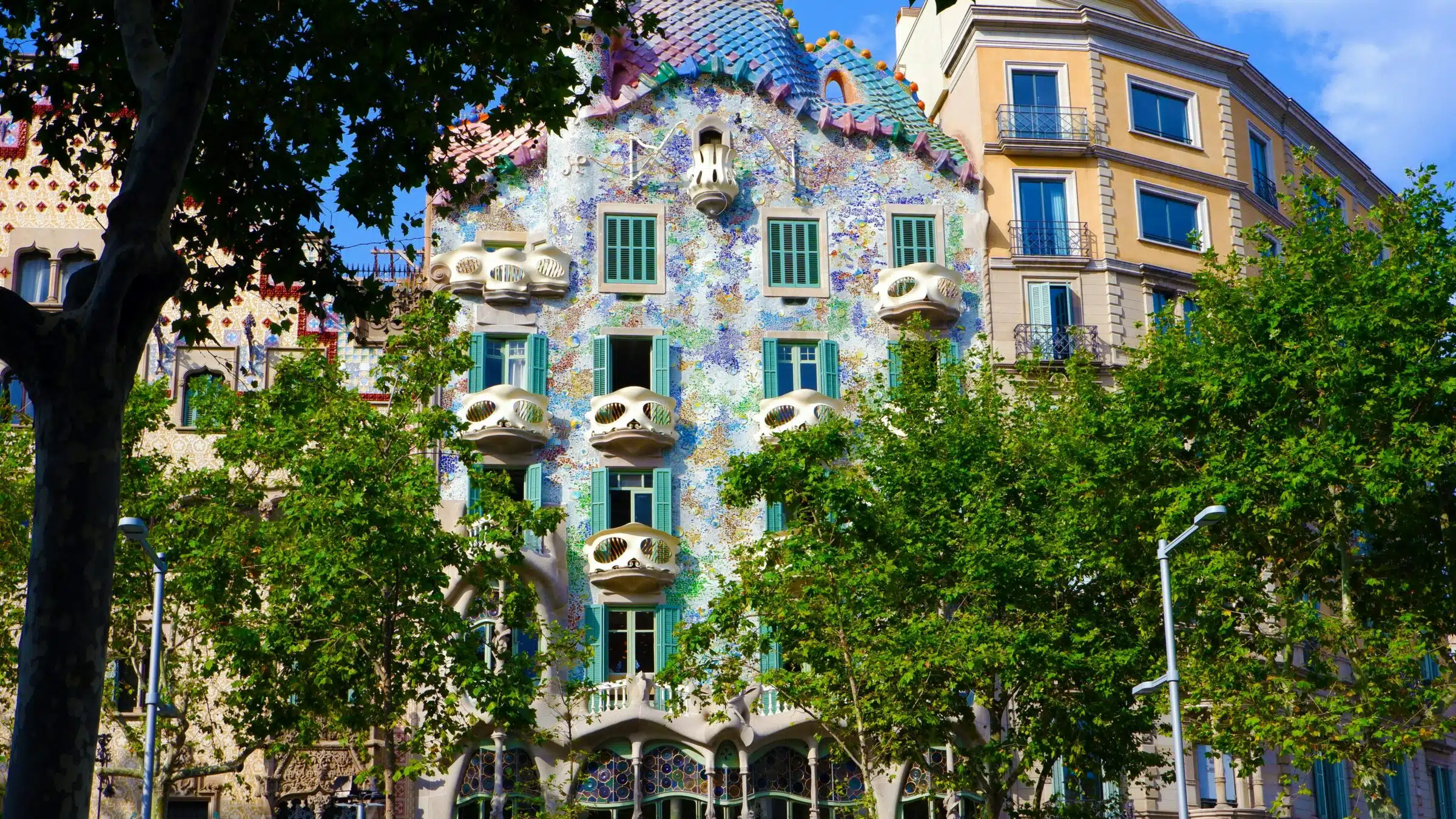
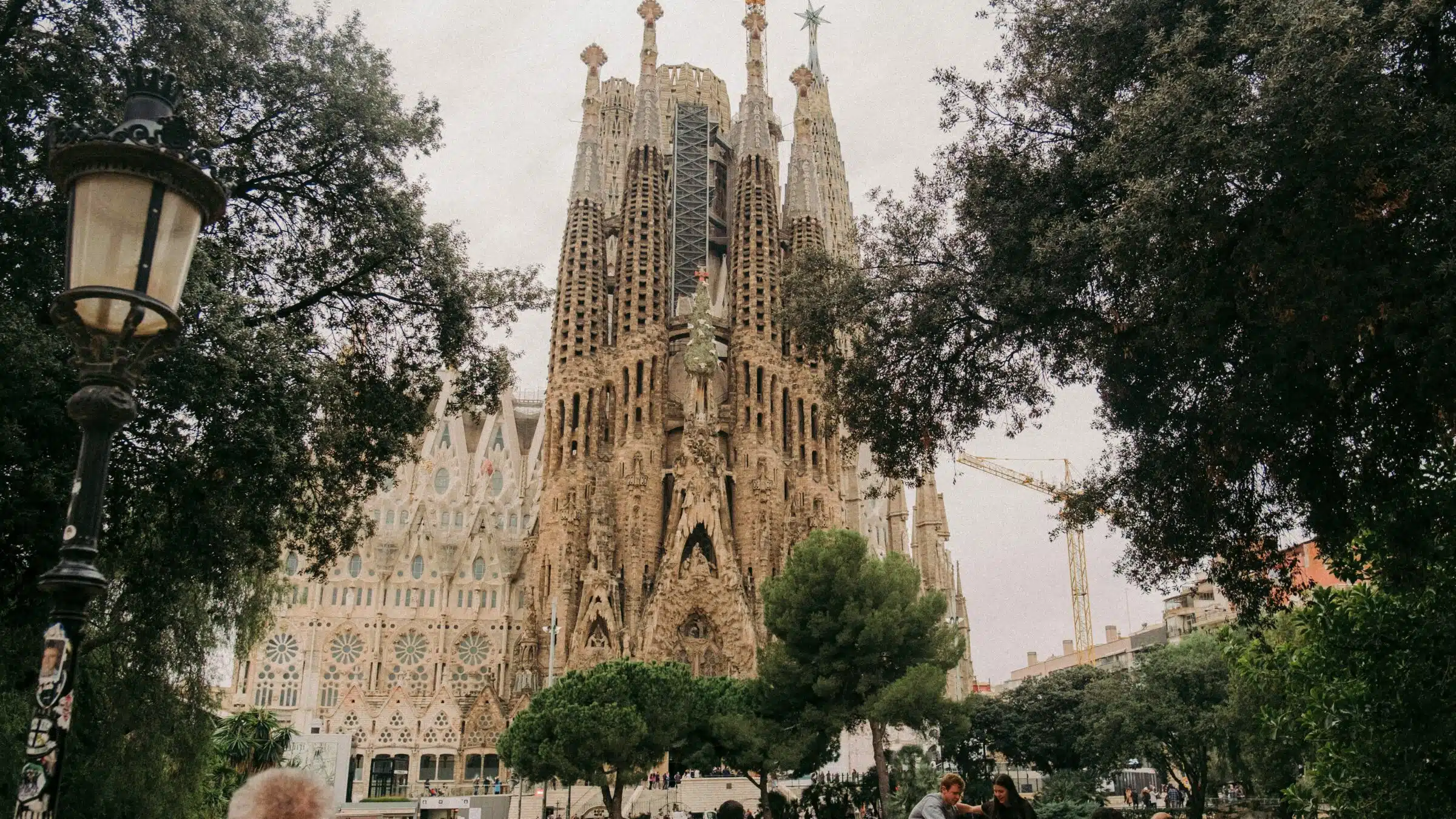
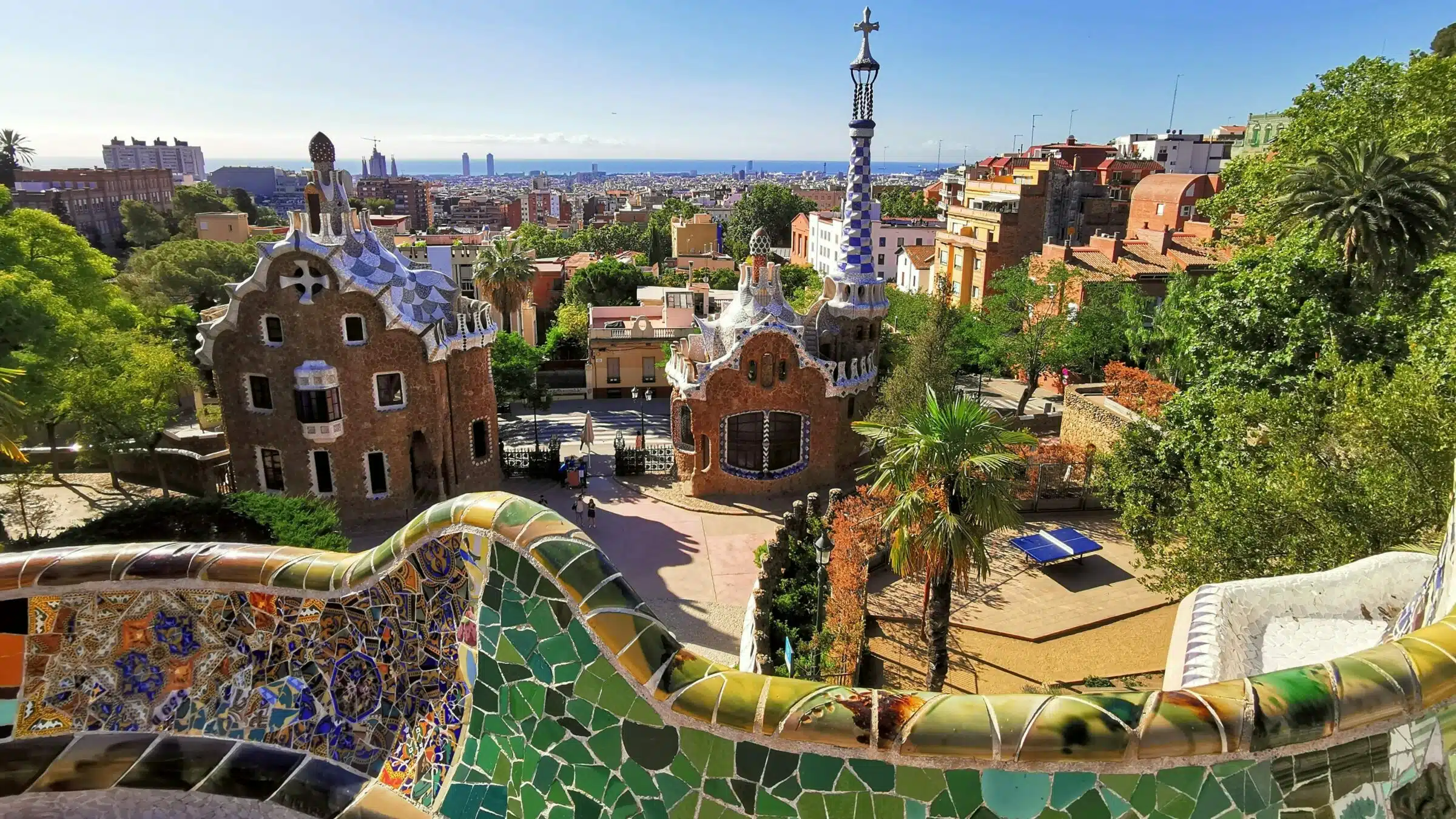
UNESCO World Heritage Site since 1984
Antoni Gaudí’s architectural masterpieces are an extraordinary testament to his genius and an integral part of Barcelona’s cultural identity. Gaudí’s works, including the iconic Sagrada Familia, Park Güell, and the Casa Batlló, display a unique combination of neo-Gothic and Art Nouveau styles with organic shapes and vibrant mosaics. His use of materials and groundbreaking construction techniques not only revolutionized architecture but also left a lasting impact on the artistic landscape of the 20th century as a whole.
Visit the top works of Antoni Gaudi by buying tickets on the official websites. Sagrada Familia, Park Guell, Casa Batllo, Palau Guell
11. Tower of Hercules in La Coruña
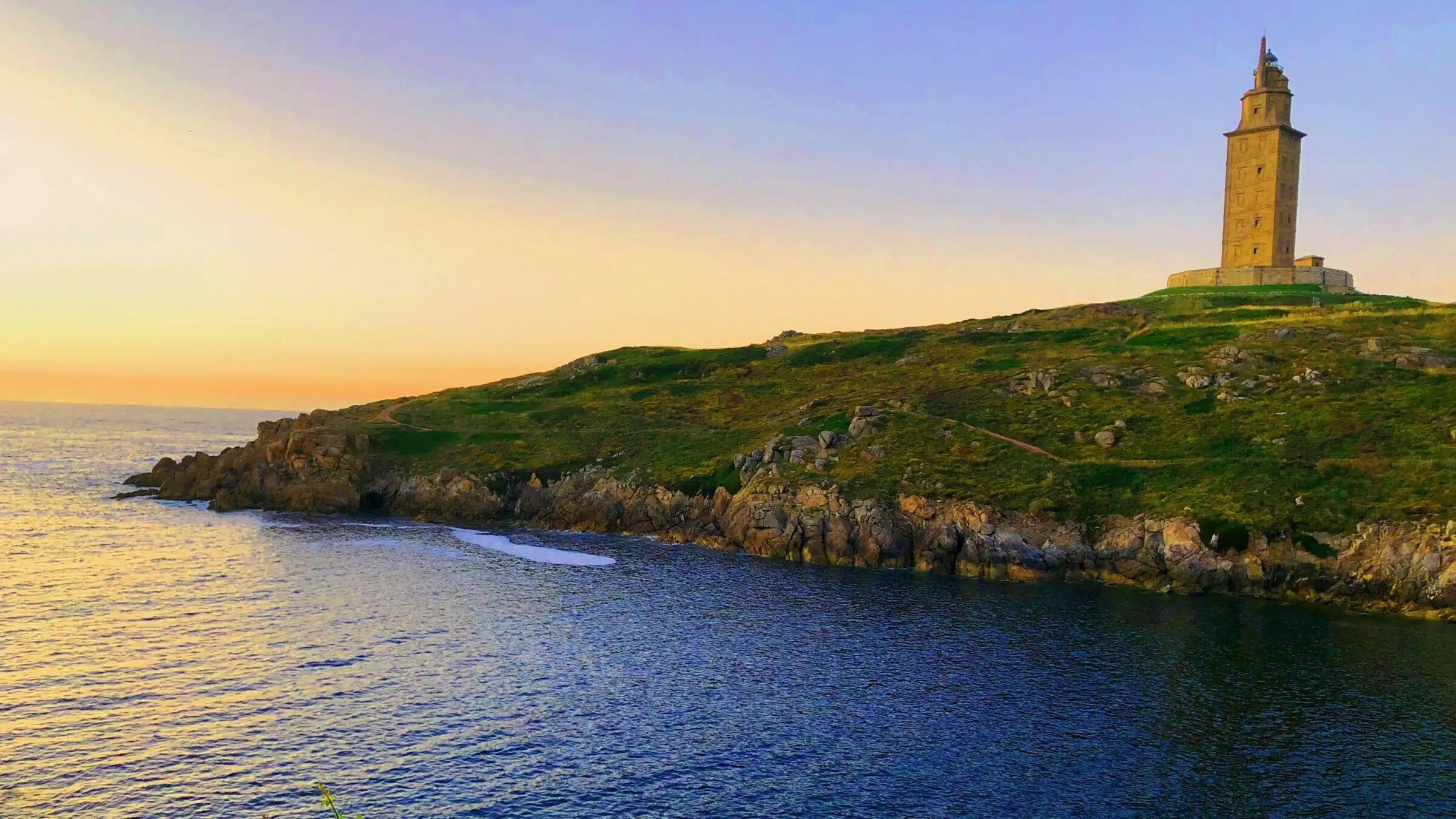
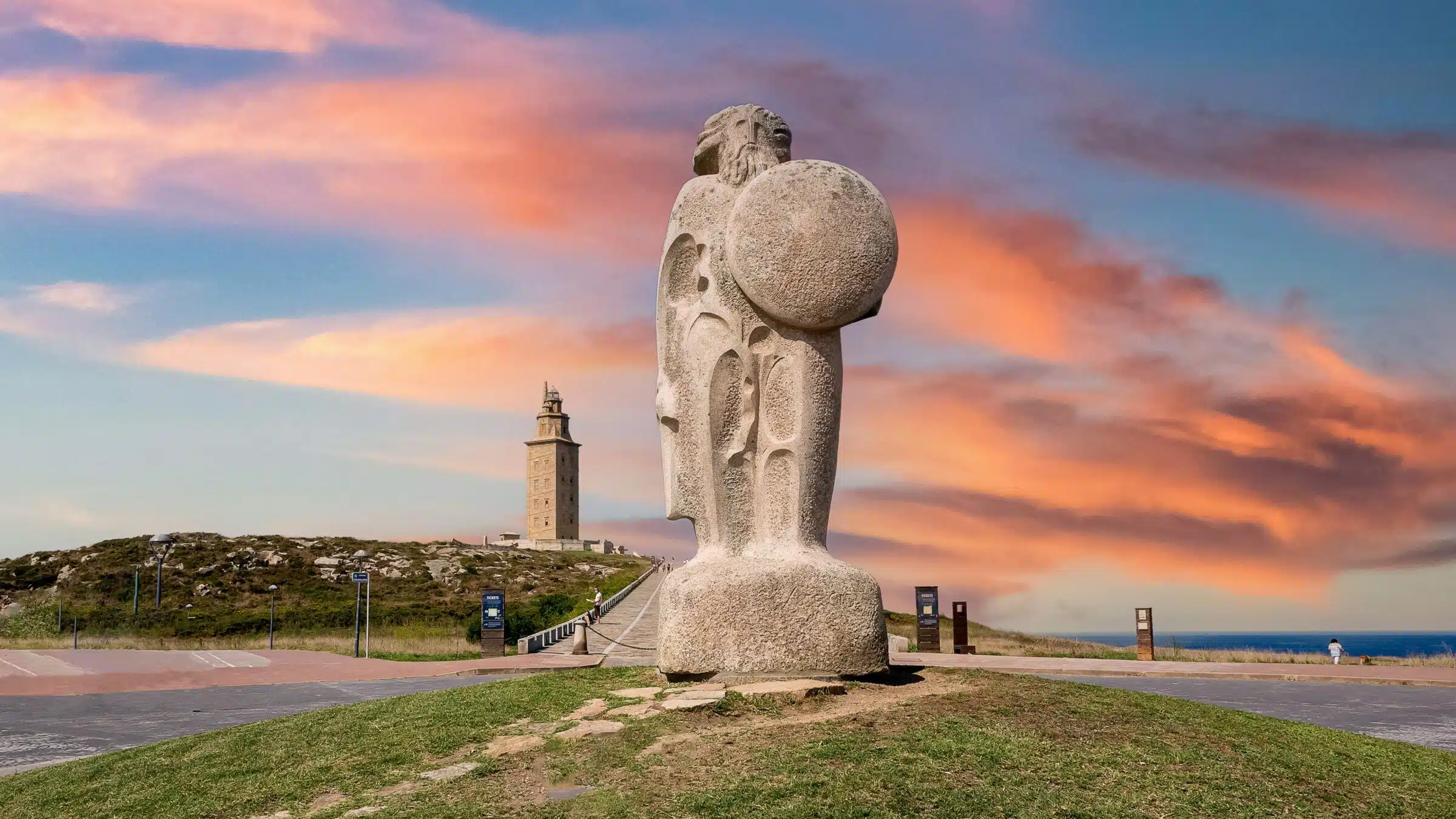
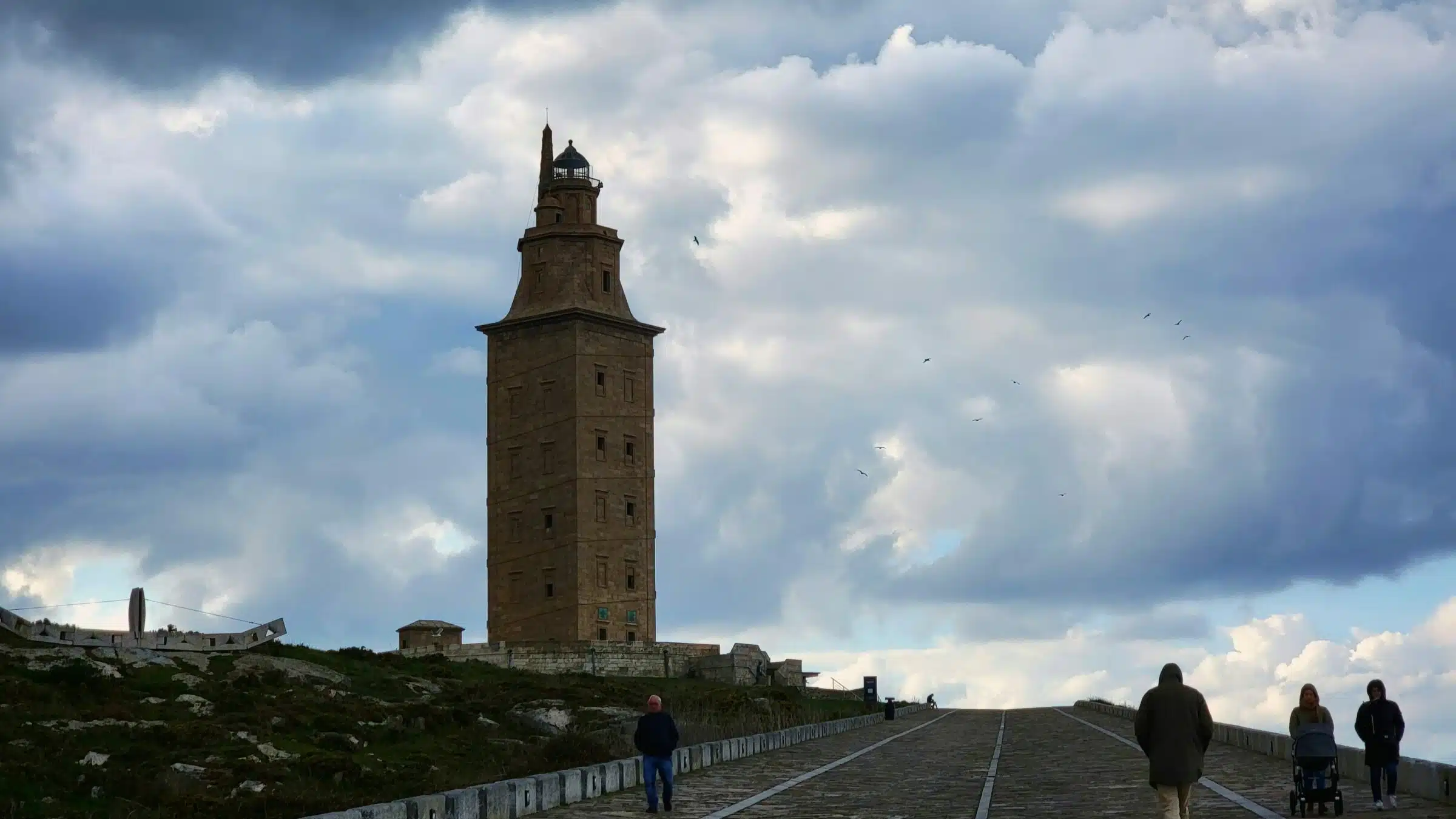
UNESCO World Heritage Site since 2009
The Tower of Hercules stands as a monumental beacon of history and engineering dating back all the way to the 1st century AD. This ancient Roman lighthouse is the oldest functioning lighthouse in the world, guiding sailors to the shores of Gacilia for 2 thousand years. The massive structure is nearly 55 meters high and made of solid granite – which has allowed it to withstand the tough coastal weather of La Coruña’s coastline since ancient times.
Visit this ancient marvel during your time in Spain by checking opening times and prices on the official websites.
12. Royal Monastery of Santa María de Guadalupe
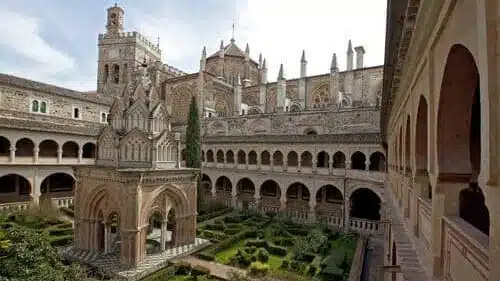
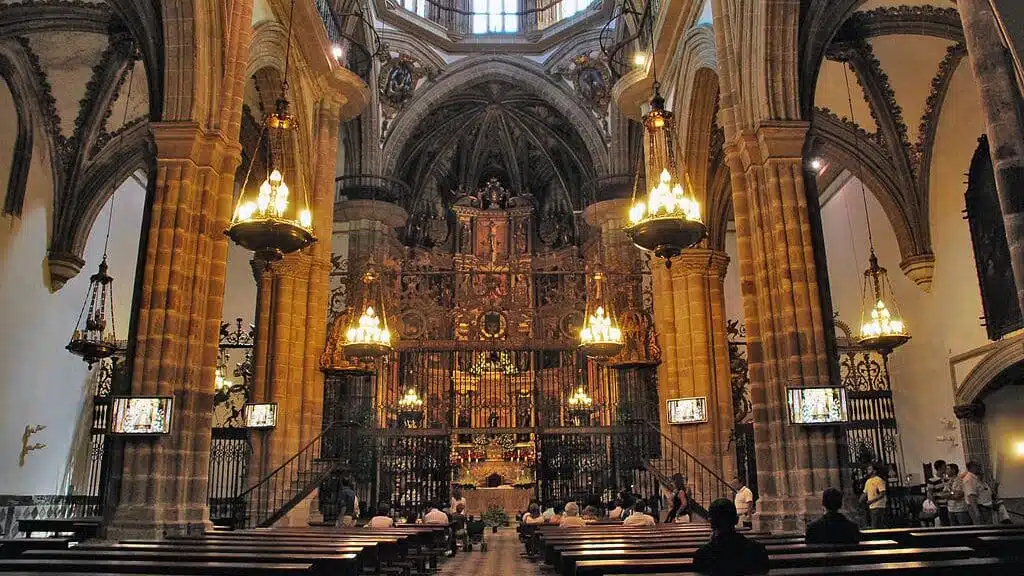
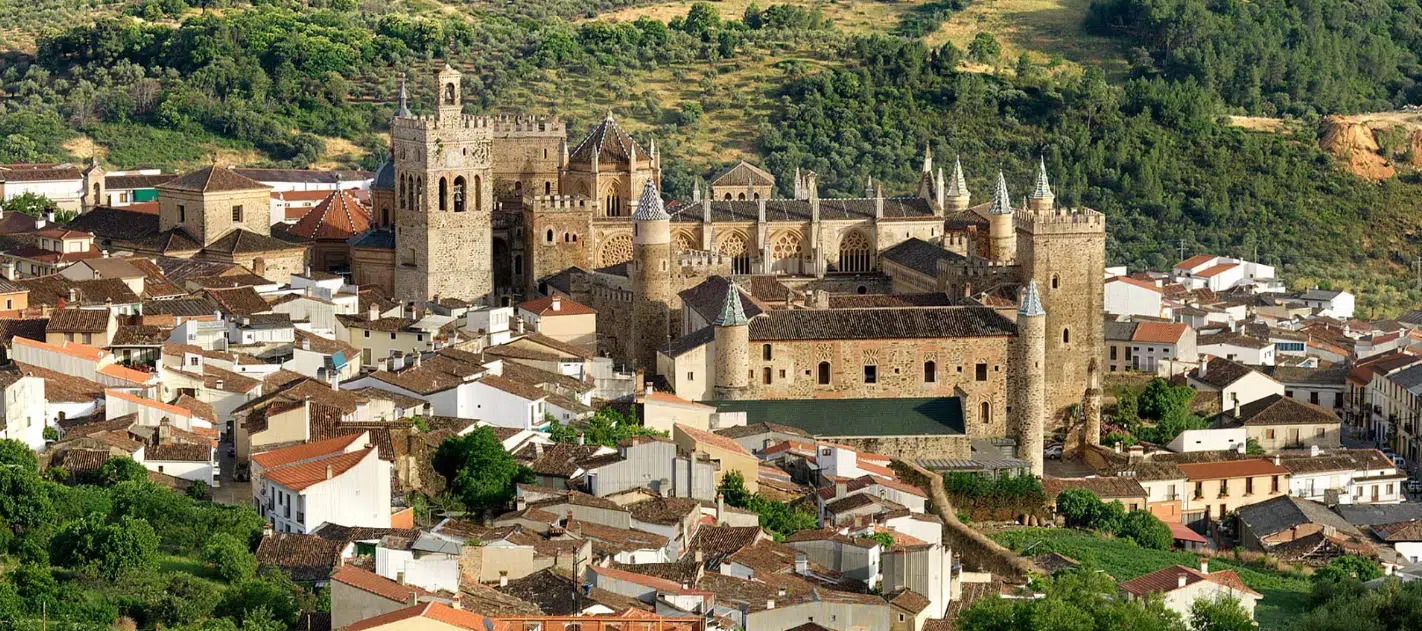
UNESCO World Heritage Site since 1993
This breathtaking masterpiece of Gothic, Mudéjar, Renaissance, and Baroque architecture is located in Spain’s Extremadura region. Constructed in the late 13th century after a shepherd discovered a miraculous statue of the Virgin Mary, the monastery quickly became a renowned pilgrimage destination. Beyond its religious significance, the monastery’s magnificent basilica, tranquil gardens, and grand cloisters highlight the Royal Monastery of Santa María de Guadalupe as a site of unparalleled importance in Spanish history.
Visit this stunning monastery during your time in Spain by checking opening times and prices on the official website.
3.3 Spanish Festivals That Can’t be Missed
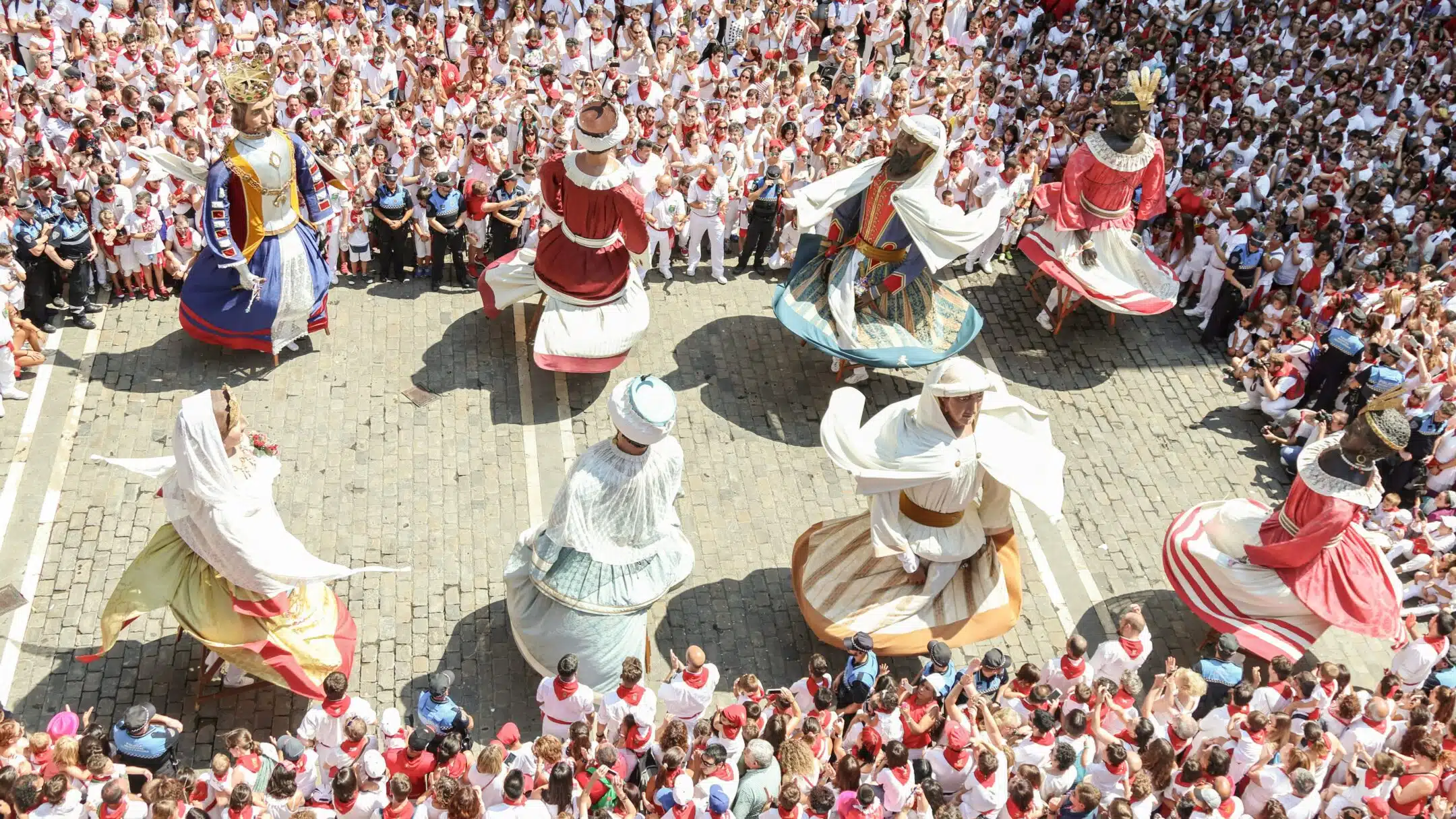
If there’s one thing the world knows about Spain, it’s that they know how to throw a good party! Spanish festivals are some of the most unique, exciting, vibrant and culturally rich in the world and a chance to participate in one can offer an important glimpse into what makes Spain so special. From the wild Running of the Bulls in Pamplona and the exciting La Mercè in Barcelona to the colorful Feria de Abril in Sevilla and the fiery Las Fallas in Valencia, these celebrations are completely unforgettable and are among the best things to do in Spain!
3.4 Spain’s Incredible Beaches – By Coast
Costa Brava (Catalonia)
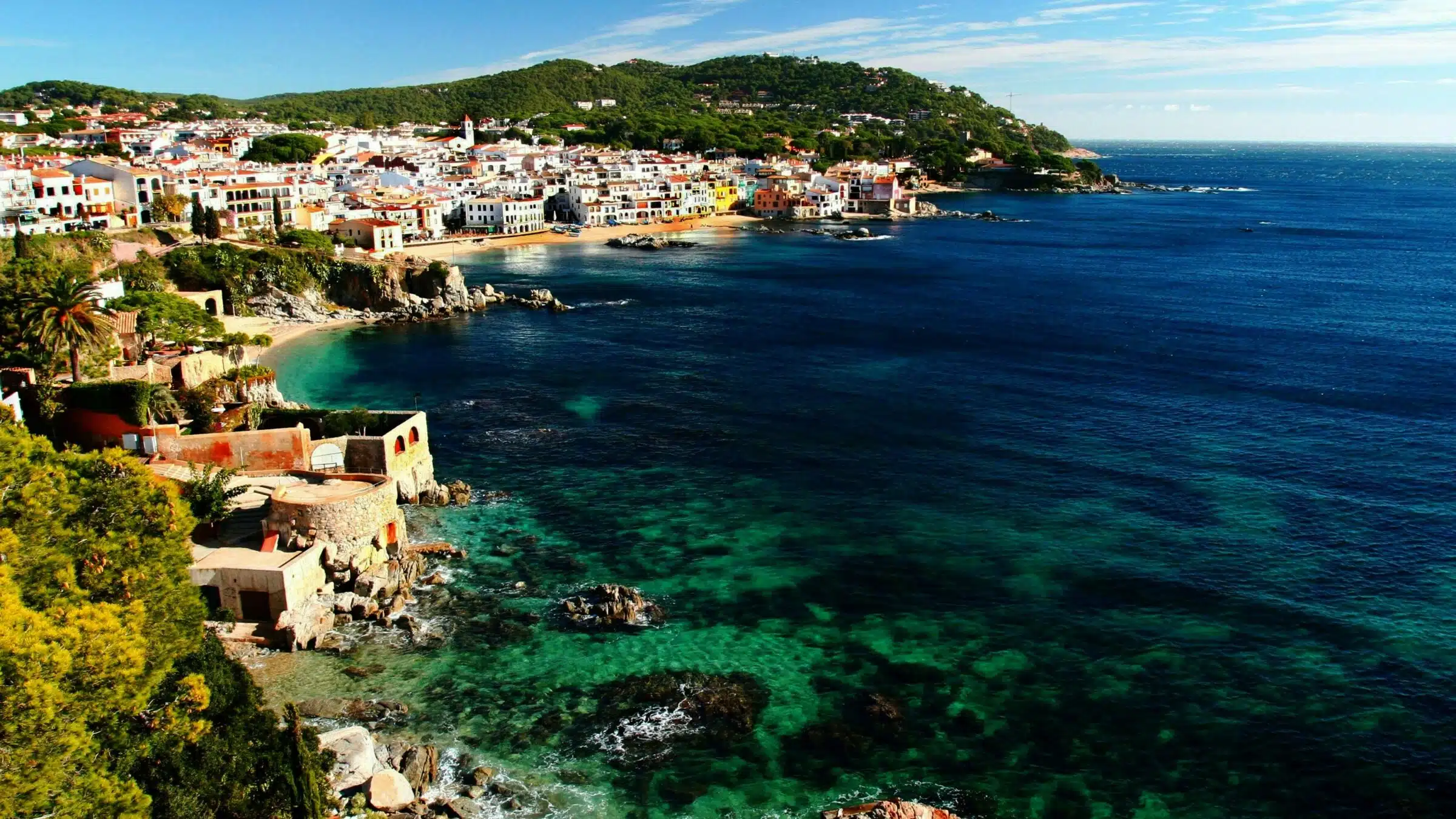
The Costa Brava is located in the northeastern part of Spain’s Catalonia region. Its beaches are renowned for its stunning, rugged coastline, charming villages, and turquoise waters.
- Platja de Aiguablava
- Cala Sa Tuna
- Platja de Tamariu
- Cala Pola
- Cala Canyelles
Costa del Sol (Andalucía)
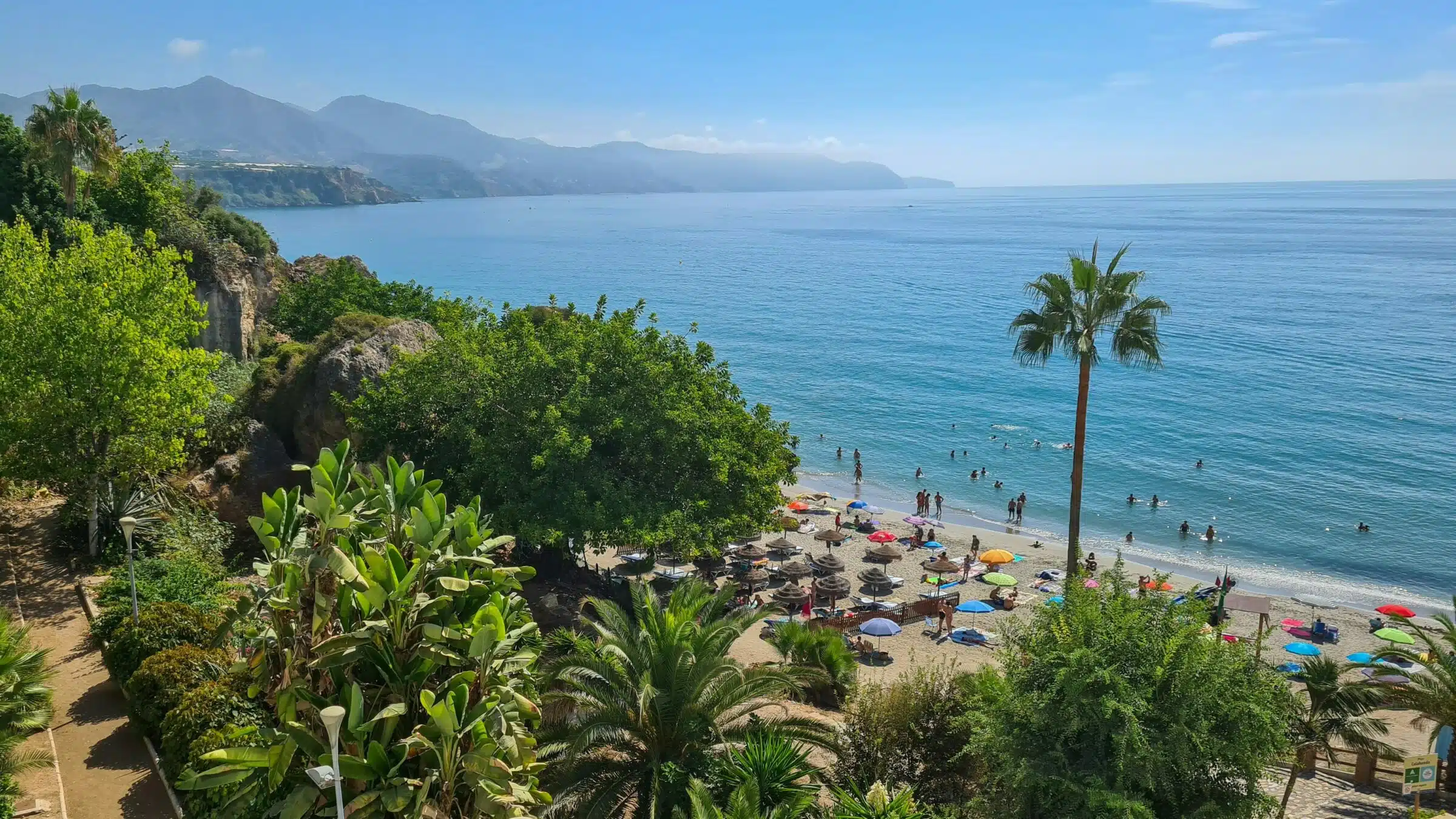
The Costa del Sol, is a very famous coastline in the south of Spain. Its beaches are known for its warm climate, large golden beaches and vibrant coastal towns.
- Playa de Burriana
- Playa de la Malagueta
- Playa de Cabopino
- Playa de Maro
- Playa de La Rada
Costa Verde (Asturias)
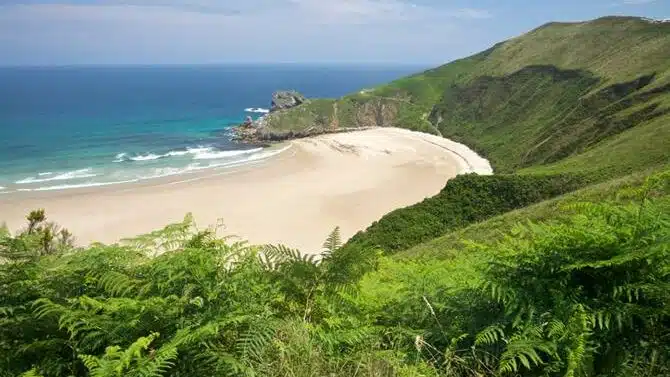
Located along the famous Bay of Biscay lies the Costa Verde. This unique coastline got it’s name from its lush green landscapes, rugged cliffs and large beaches.
- Playa de Rodiles
- Playa del Silencio
- Playa de Gulpiyuri
- Playa de Torimbia
- Playa de Poo
Balearic Coast (Balearic Islands)
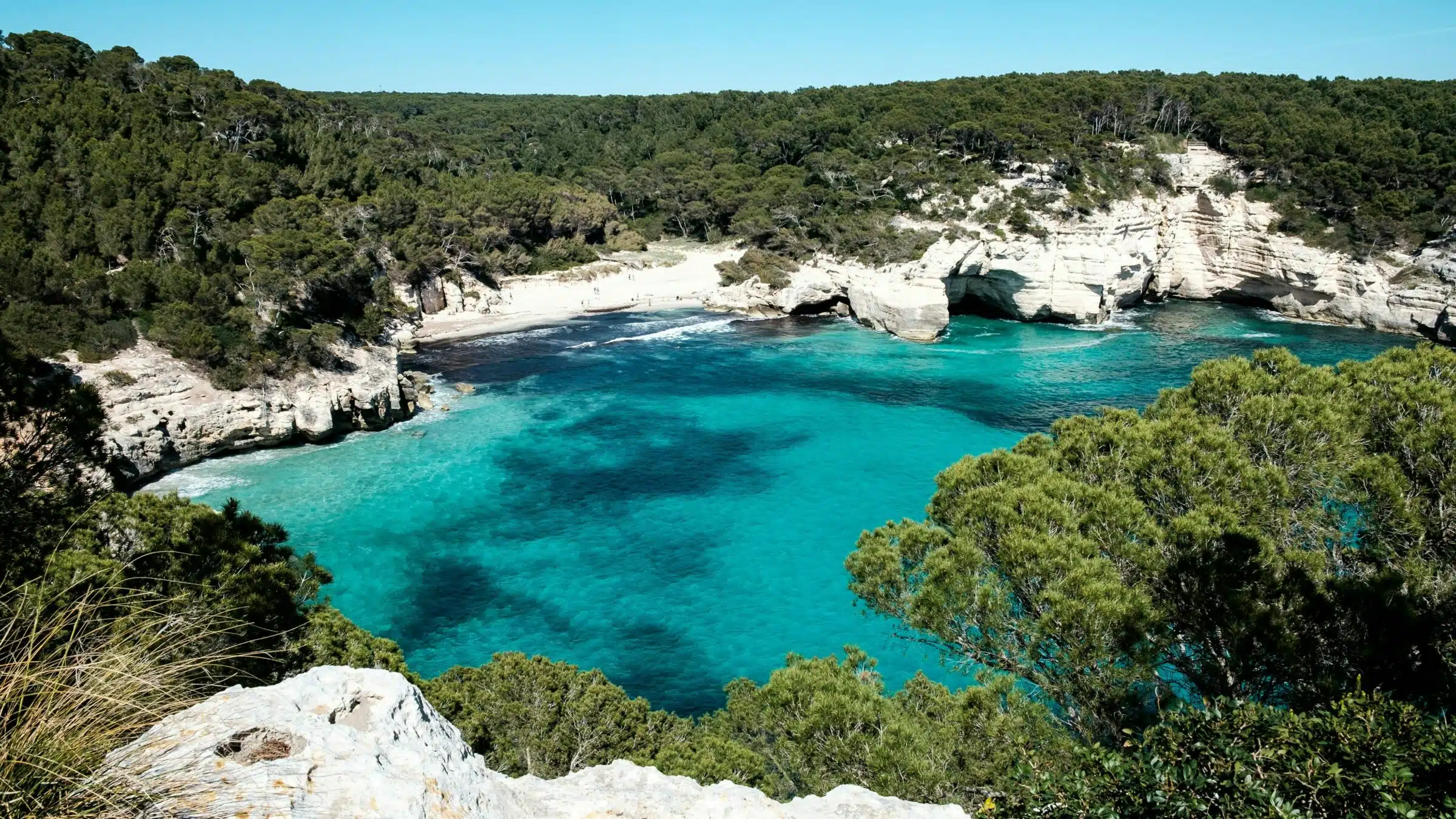
The Balearics are a unique chain of islands off the eastern coast of Spain in the Mediterranean Sea. They are most known for their crystal-clear waters, small hidden beaches (call).
- Cala Mitjana (Menorca)
- Cala Comte (Ibiza)
- Cala Mesquida (Mallorca)
- Es Trenc (Mallorca)
- Playa de Ses Illetes (Formentera)
Costa da Morte (Galicia)
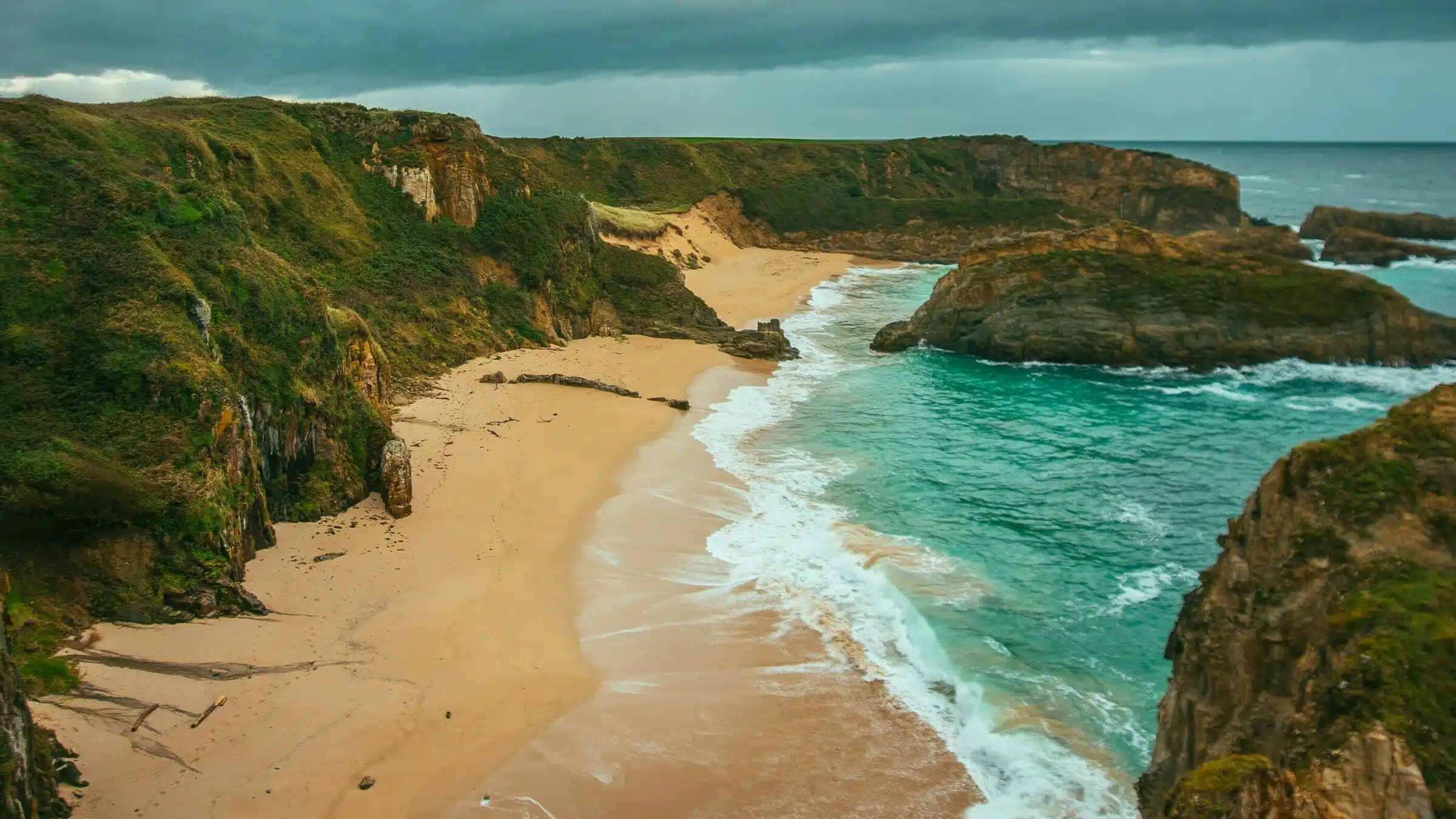
The Costa da Morte, located in the northwestern part of Spain in the Galicia region, is known for its rugged coastline, dramatic cliffs, and beautiful, often wild beaches.
- Playa de Carnota
- Playa de Laxe
- Playa de Soesto
- Playa de Nemiña
- Playa de Traba
Canary Coast (Canary Islands)
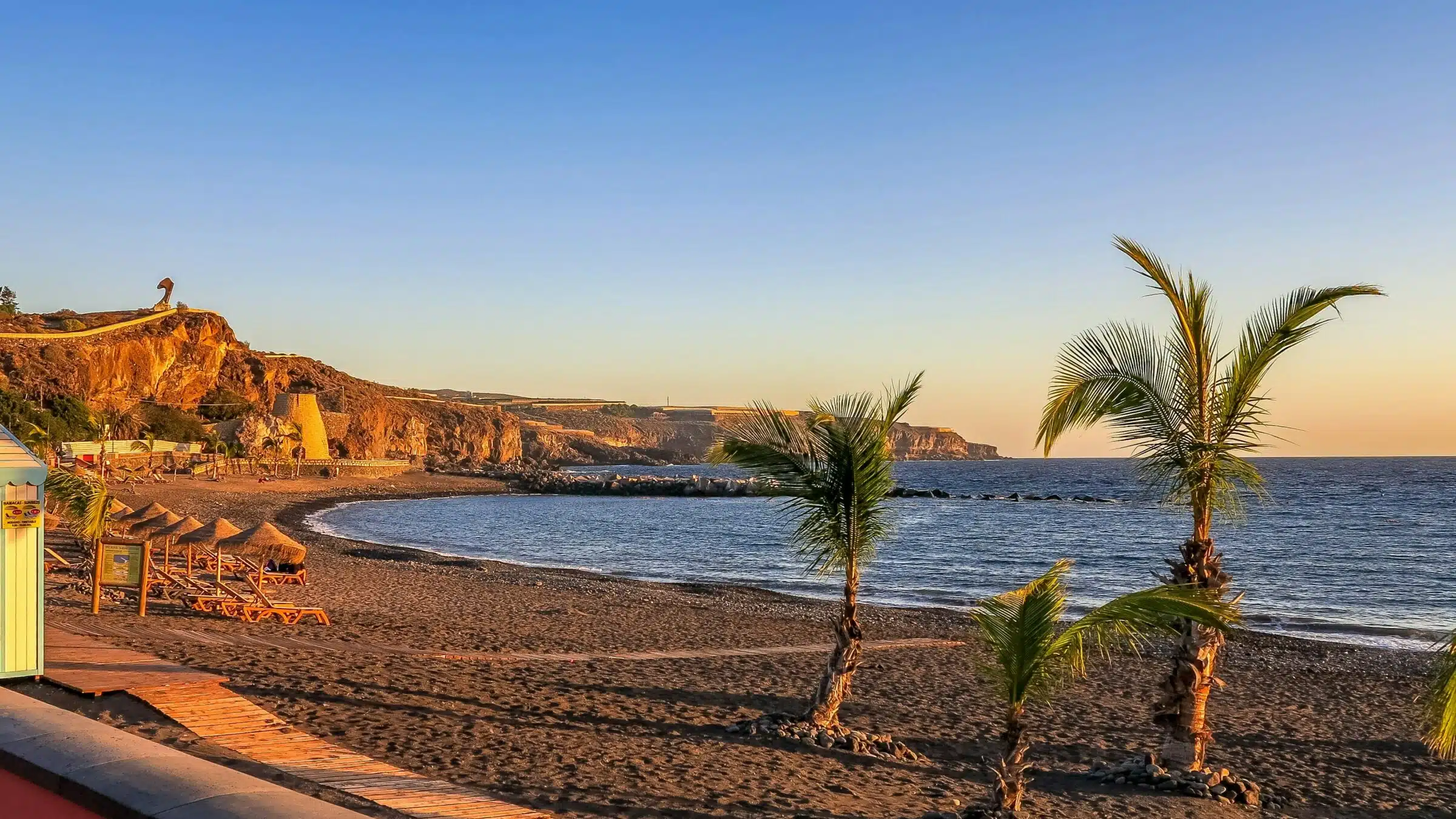
The Canary Islands can be found off the northwest coast of Africa. Their beaches are known for their sand made from volcanic rock, desert-like dunes and lush mountainous regions.
- Playa de Las Teresitas (Tenerife)
- Playa de Amadores (Gran Canaria)
- Playa de Cofete (Fuerteventura)
- Playa de Papagayo (Lanzarote)
- Playa de Puerto Naos (La Palma)
Costa de la Luz (Andalucía)
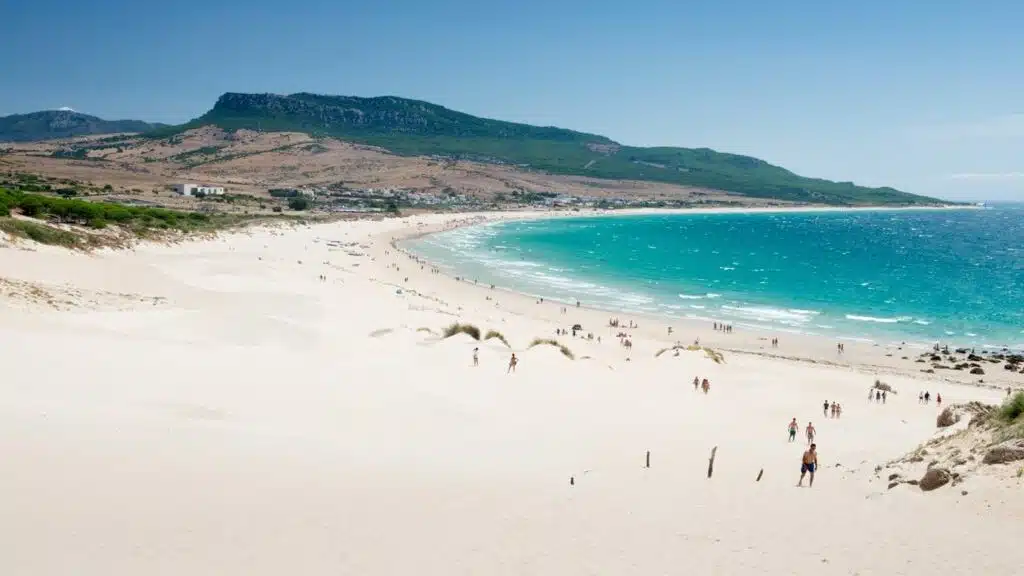
The Costa de la Luz is located in southwestern Spain along the Atlantic coast. Its best known for its long stretches of golden sand, clear waters, and relaxing atmosphere.
- Playa de la Victoria
- Playa de Valdevaqueros
- Cala del Aceite
- Playa de la Fontanilla
- Playa de Bolonia
Costa Vasca (Basque Country)
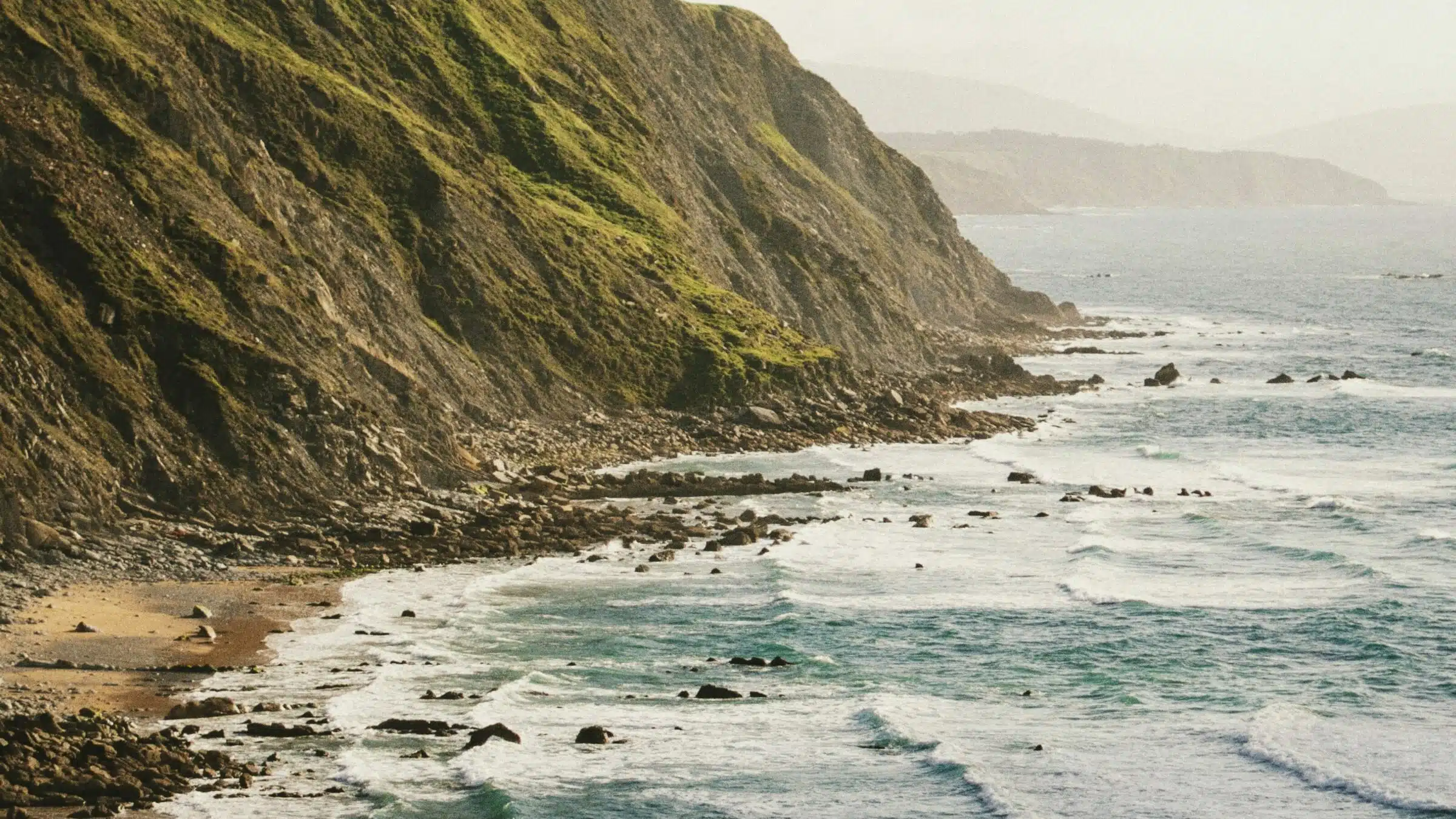
The Costa Vasca, or Basque Coast is located in the northern part of Spain. The coastline is famous for its charming fishing villages, large beaches and dramatic cliffs.
- Playa de la Concha
- Playa de Saturraran
- Playa de Hondarribia
- Playa de Aritzatxu
- Playa de Bakio

